Chinese drinks encompass a rich tapestry of flavors and traditions, reflecting the diverse landscapes and cultural heritage of the nation. From classic teas like green tea, oolong, and jasmine tea to herbal infusions like chrysanthemum tea, Chinese beverages are celebrated for their health benefits and nuanced taste profiles. Delight in the refreshing sweetness of sugarcane juice, the cooling properties of mung bean soup, or the unique textures of bubble tea. Whether sipped during traditional tea ceremonies or enjoyed casually on bustling streets, Chinese drinks offer a sensory journey through the country's culinary diversity and time-honored brewing techniques.
Kombucha
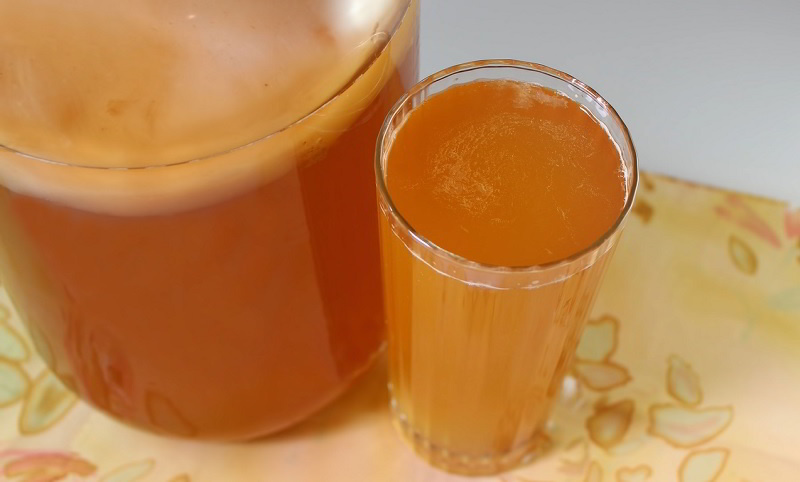
Kombucha, an effervescent tea, undergoes fermentation with bacteria and yeast, resulting in a sweetened black tea drink. Originating in China, it has a rich history, spreading to Russia and Eastern Europe by the early 20th century and gaining global popularity. Often called kombucha tea, it can be enhanced with fruit, juice, spices, or other flavorings. Embraced globally, kombucha is both a homebrew phenomenon and commercially available, reflecting its diverse cultural roots and appeal as a refreshing and probiotic-infused beverage. With a legacy tied to ancient traditions, kombucha stands as a testament to the enduring fascination with fermented drinks and their role in various cultures worldwide.
Matcha
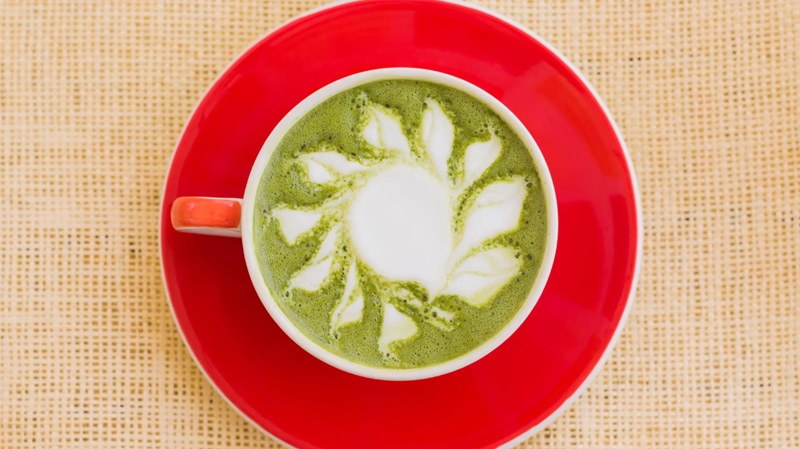
Matcha, originating in China and now predominantly produced in Japan, is a finely ground powder from specially cultivated and processed green tea leaves. These tea plants undergo three to four weeks of shade growth, enhancing the production of theanine and caffeine. The unique preparation involves removing stems and veins during processing. Unlike traditional tea consumption, matcha is suspended in water or milk, creating a vibrant and rich beverage.
Beyond traditional Japanese tea ceremonies, matcha has evolved to flavor and color various foods, including mochi, soba noodles, and green tea ice cream. Modern applications extend to matcha lattes and diverse Japanese wagashi confectionery. This versatile green tea powder has transcended cultural boundaries, becoming a symbol of meditative spirituality and a trendy culinary ingredient appreciated globally.
Green Tea
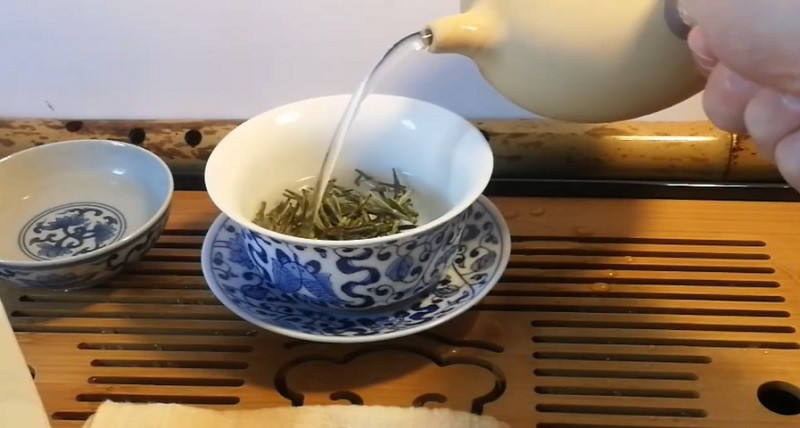
Green tea, derived from the leaves and buds of Camellia sinensis, stands out for its distinct production process. Unlike oolong and black teas, green tea skips the withering and oxidation stages, preserving its natural freshness and vibrant color. Originating in China, the art of cultivating and producing green tea has expanded across East Asia, giving rise to diverse varieties.
The variances in green tea are influenced by factors such as the specific C. sinensis cultivar, growing conditions, horticultural practices, production methods, and harvest timing. These elements contribute to the nuanced flavors and aromas found in different green tea varieties.
Consumed in various forms globally, green tea is cherished for its versatility. It can be enjoyed as a comforting hot beverage or cold brew. The leaves may also be incorporated into culinary creations, adding a unique depth to dishes. Known for its potential health benefits, green tea has become not just a cultural tradition but a popular and nutritious choice in modern lifestyles.
Pu'er Tea
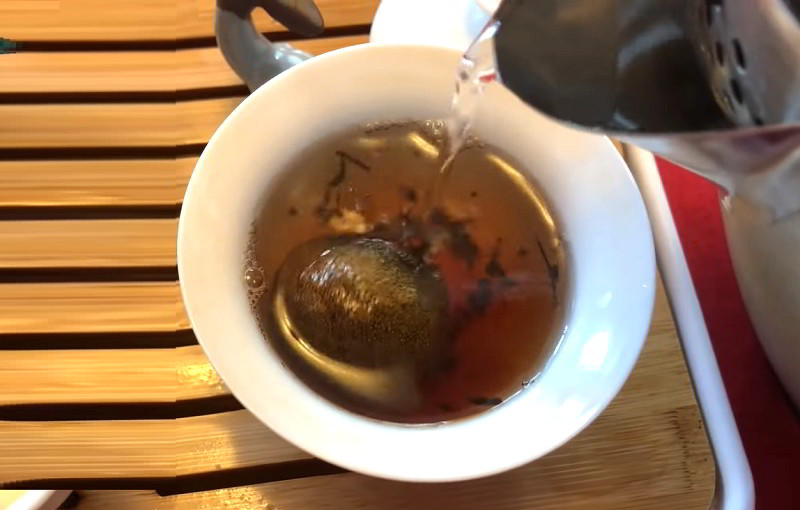
Pu'er, a distinctive fermented tea hailing from Yunnan Province, China, encapsulates centuries-old traditions and intricate production techniques. In the realm of Chinese tea terminology, the fermentation of pu'er involves microbial processes, specifically 'wet piling,' applied after the tea leaves undergo drying and rolling.
The production of pu'er unfolds in two primary styles: the traditional, extensive process known as shēng (raw) pu'er, and the contemporary, expedited method known as shóu (ripe) pu'er. Initially, pu'er begins as a "rough" raw product, available in this state or compressed into various shapes and marketed as "shēng chá" (raw tea). Both forms embark on a nuanced journey of gradual fermentation and maturation over time, showcasing the fusion of controlled microbial transformation and oxidation. This meticulous process yields pu'er teas with distinct flavors, textures, and aromatic profiles, embodying the rich heritage and craftsmanship of Chinese tea culture.
Oolong
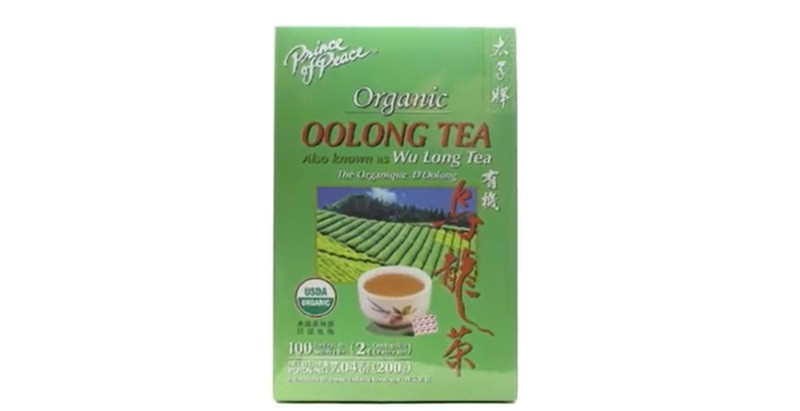
Oolong tea, a cherished semi-oxidized Chinese tea crafted from Camellia sinensis leaves, undergoes a meticulous production process. The journey begins with withering the leaves under the radiant sun, allowing a controlled oxidation before the delicate curling and twisting stage. Notably, fine-quality oolong teas often feature distinct tea plant cultivars exclusively selected for specific varieties.
The degree of oxidation, determined by the duration between picking and final drying, spans a spectrum from 8% to 85%, contributing to the diverse range of flavors across oolong teas. This traditional tea holds a special place in southern China and among ethnic Chinese communities in Southeast Asia, with the Fujian gongfu tea ceremony representing a significant preparation style. Oolong's unique charm lies in its versatility, as different styles offer a wide array of flavors, captivating tea enthusiasts with its rich heritage and intricate production techniques.
Kvass
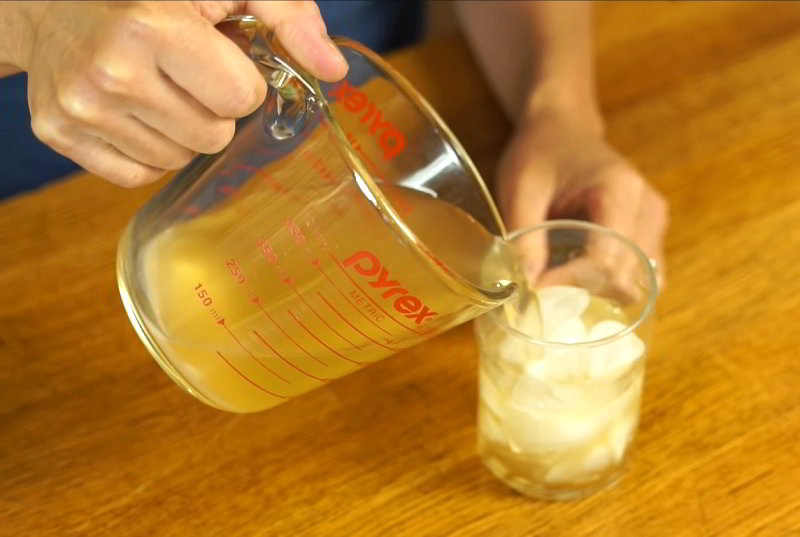
Kvass, a fermented low-alcohol beverage originating from northeastern Europe, boasts a sweet-sour taste, light-brown color, and a slightly cloudy appearance. The beverage holds a rich history, with the earliest mention found in the Primary Chronicle, recounting the festivities during Vladimir the Great's baptism in 996.
Traditional kvass production involves creating a mash from rye flour or rye bread and malt, soaked in hot water, and left to ferment for about twelve hours with sugar and yeast. This method, dating back centuries, offers a unique flavor profile. In modern times, industrial processes often use wort concentrate combined with diverse grain mixtures.
Widely consumed in Belarus, Lithuania, Poland, Latvia, Estonia, Russia, Ukraine, and even parts of China, Finland, and Sweden, kvass has evolved into a cultural staple. Furthermore, its introduction in Xinjiang during the mid-19th century, where it became known as kavas, exemplifies the beverage's global influence. Enjoyed cold, especially alongside barbecues, kvass continues to captivate enthusiasts with its centuries-old heritage and diverse production techniques.
Soy Milk

Soy milk, also known as soymilk or soya milk, is a plant-based beverage created by soaking and grinding soybeans. After boiling the mixture and filtering out any remaining particulates, the result is a versatile and nutritious alternative to dairy milk. This stable emulsion, embodying a harmonious blend of oil, water, and protein, originated in China and gradually gained popularity in Europe and North America during the latter half of the 20th century. Innovations in production techniques contributed to refining its taste and consistency, bringing it closer to the qualities of dairy milk.
Beyond being a standalone beverage, soy milk has become a versatile ingredient. It serves as a dairy milk substitute for vegans and those with lactose intolerance. Additionally, soy milk is a key component in creating imitation dairy products like soy kefir, soy cream, soy yogurt, and soy-based cheese analogues. Its usage extends to various culinary applications, enriching pancakes, milkshakes, bread, mayonnaise, smoothies, and baked goods. This plant-based gem has not only found its place in diverse dietary preferences but has also become an essential component in crafting delectable and nutritious dishes across the globe.
Lapsang Souchong
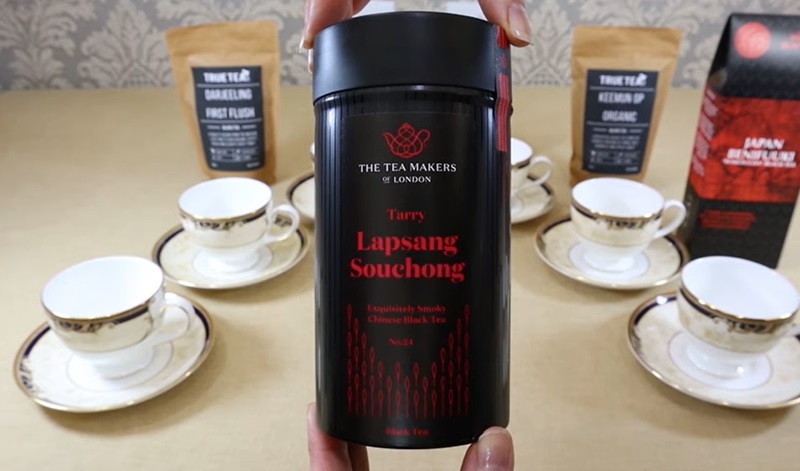
Lapsang souchong, a distinctive black tea, is crafted from Camellia sinensis leaves that undergo a unique smoking process over pinewood fires. This process involves cold or hot smoking, impacting the tea's flavor and aroma. The smoky notes include wood smoke, pine resin, smoked paprika, and dried longan. The intensity of the smokiness can be adjusted based on factors such as distance from the heat source and duration of the process. Originating from the Wuyi Mountains in Fujian, China, lapsang souchong is classified as a Wuyi tea or bohea. Unlike bitter varieties, this tea is not sweetened and may be mixed with milk, offering a complex and aromatic drinking experience.
White Tea
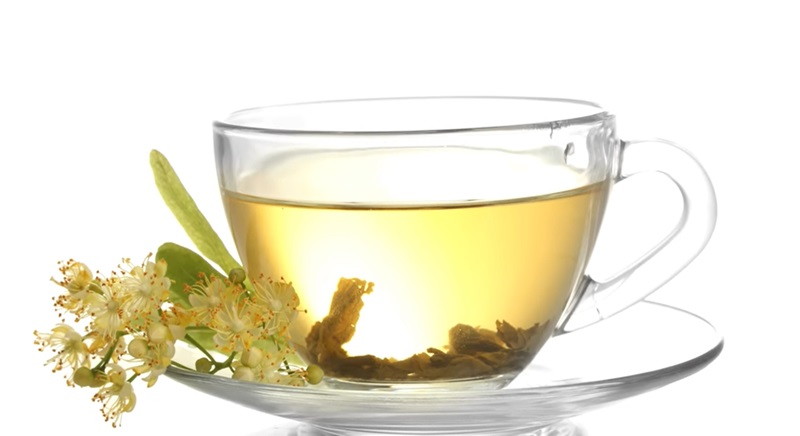
White tea encompasses various styles, typically featuring young or minimally processed leaves from the Camellia sinensis plant. The term lacks a universally accepted definition, causing international discrepancies. Some define white tea as merely dried leaves, while others include buds and young leaves with minimal processing. Generally, white tea involves leaves that are not rolled or oxidized, imparting a "lighter" flavor compared to green or traditional black teas.
Brewed white tea, despite its name, presents a pale yellow hue. The name originates from the fine silvery-white hairs on unopened tea buds, giving the plant a whitish appearance. These buds are commonly used in white tea production. Harvested primarily in China, particularly the Fujian province, white tea is also produced in Eastern Nepal, Taiwan, Galle (Southern Sri Lanka), Thailand, and northeast India. Its delicate, nuanced flavor profile has made white tea a sought-after variety among tea enthusiasts worldwide.
Jasmine Tea
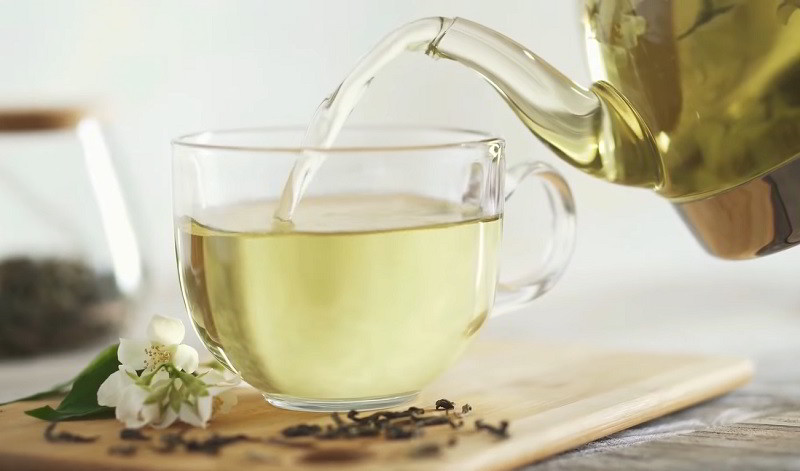
Jasmine tea, renowned for its subtle sweetness and captivating fragrance, is a scented tea infused with the aroma of jasmine blossoms. Although green tea is the most common base, jasmine tea can also feature white or black tea. Originating during the Han dynasty, jasmine tea gained popularity in the fifth century, with widespread adoption occurring during the Qing dynasty, coinciding with increased tea exports to the West.
The jasmine plant, cultivated at elevated mountainous regions, imparts its distinct aroma to the tea leaves. Fujian, a Chinese province, is particularly acclaimed for producing high-quality jasmine tea, with notable production also in Jiangxi, Guangxi, Guangdong, Hunan, Jiangsu, and Zhejiang provinces. Japan, specifically Okinawa Prefecture, is recognized for its Sanpin-cha jasmine tea. Today, jasmine tea remains a popular beverage served in tea shops worldwide, embodying centuries-old craftsmanship and cultural significance. It holds the distinction of being the most famous scented tea in China.
Da Hong Pao
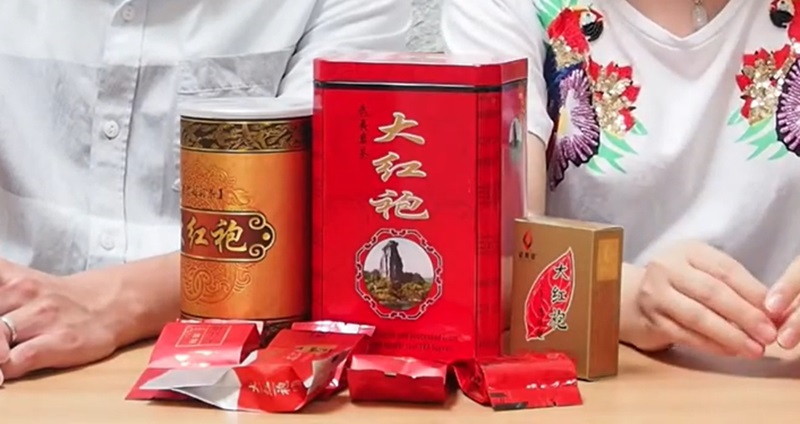
Da Hong Pao, a distinguished Wuyi rock tea hailing from the scenic Wuyi Mountains in Fujian Province, China, is renowned for its unique orchid fragrance and enduring sweet aftertaste. Its dry leaves, resembling slightly twisted strips or tightly knotted ropes, showcase a harmonious blend of green and brown hues. Once brewed, the tea transforms into a vibrant orange-yellow infusion, exuding brightness and clarity.
Noteworthy for its remarkable ability to preserve flavor, Da Hong Pao unfolds its character over nine steepings, a testament to its exceptional quality. This tea, often associated with a premium price tag, reflects its rarity and sought-after characteristics.
To appreciate Da Hong Pao's essence, a traditional brewing method involves a Purple Clay Teapot and water heated to 100 °C (212 °F). Purified water is recommended, with an emphasis on using freshly boiled water to maintain optimal taste. Some connoisseurs consider the third and fourth steepings as the pinnacle of flavor, adding to the allure of this revered tea.
Tieguanyin

Tieguanyin, a distinctive Chinese oolong tea with roots dating back to the 19th century in Anxi, Fujian province, boasts diverse gastronomic characteristics shaped by various regions within Anxi.
The complex processing of Tieguanyin demands expert knowledge to unlock its true essence. Despite being crafted from high-quality raw tea leaves, the intricate processing is crucial to reveal its full character. The precise method of crafting Tieguanyin has been shrouded in secrecy, underscoring the importance of this ancient art.
Tieguanyin teas from different areas of Anxi offer unique flavor profiles, adding to the allure of this revered oolong. Recognized among the world's most expensive teas, top-tier varieties of Tieguanyin epitomize the pinnacle of tea craftsmanship. The intricate dance between the quality of the raw leaves, the ideal plucking time, and the nuanced processing underscores the meticulous care that contributes to Tieguanyin's esteemed status in the world of tea.
Barley Tea
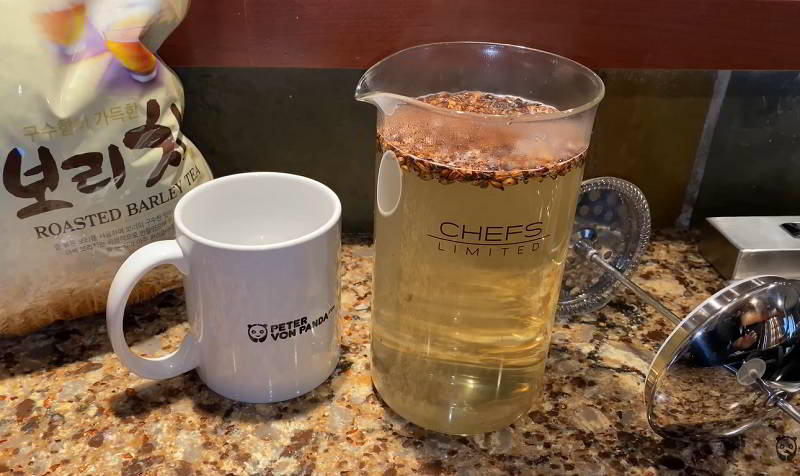
Barley tea, a revered infusion with a foundation in roasted grains, holds a significant place in the beverage culture of East Asian countries, including China, Korea, and Japan. This tea, crafted from barley, imparts a distinctive toasty and bitter flavor that has become a staple in households and restaurants across the region.
In Korea, barley tea is a versatile beverage, enjoyed both hot and cold, often replacing water in many households. Its ubiquity reflects its popularity and cultural significance. Meanwhile, in Japan, the tea is predominantly served cold, making it a refreshing choice, especially during the summer months. Barley tea is not confined to traditional brewing; it is conveniently available in tea bags or pre-bottled forms, adding to its accessibility and widespread consumption in Korea and Japan.
The nuanced variations in the preparation and consumption of barley tea showcase its adaptability and enduring appeal in East Asian culinary traditions, where it has seamlessly integrated into daily life as a cherished and versatile beverage.
Gunpowder Tea
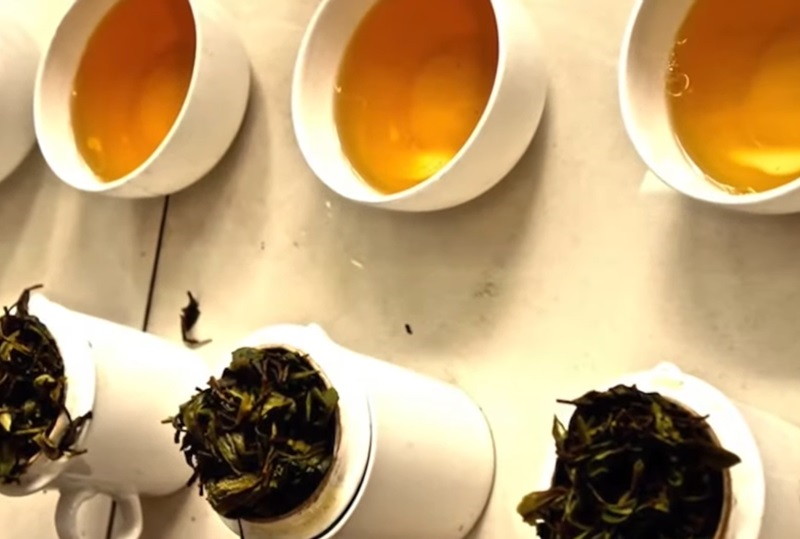
Gunpowder tea, a distinctive variety, derives its name from the meticulous rolling process where each tea leaf is meticulously shaped into small pellets, resembling gunpowder or a phonetically similar phrase in Chinese. This unique rolling technique is commonly applied to both dried green tea, the most widespread type beyond China, and oolong tea.
The roots of gunpowder tea production trace back to the Tang dynasty (618–907), demonstrating a long-standing tradition that has endured through centuries. Initially introduced during this historical period, gunpowder tea also found its way to Taiwan in the nineteenth century, further contributing to its global presence.
In the meticulous crafting process, the tea leaves undergo withering, steaming, and then rolling into pellet shapes before being dried. While hand-rolling was once the norm, modern production relies on machines for all but the highest-grade gunpowder teas. This method ensures a consistent and high-quality tea that encapsulates the rich heritage and craftsmanship of gunpowder tea, making it a notable and cherished variety in the world of tea enthusiasts.
Longjing Tea
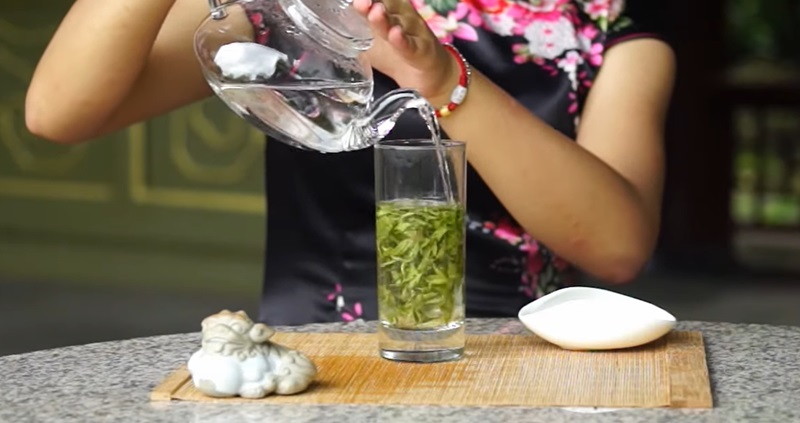
Longjing tea, also known as Dragon Well tea, hails from the picturesque Longjing Village in Hangzhou, Zhejiang Province, China. This esteemed pan-roasted green tea stands out for its exceptional quality, crafted primarily by hand, and has earned the distinguished title of "China Famous Tea."
Nurtured by the rich tea-growing traditions of the region, Longjing tea boasts a unique flavor profile and exquisite characteristics. The meticulous hand-production process enhances its premium quality, making it a revered variety among tea enthusiasts. With its roots deeply embedded in Hangzhou's tea culture, Longjing tea continues to captivate connoisseurs with its distinct aroma, delicate taste, and the cultural heritage it embodies. This renowned green tea remains an emblem of craftsmanship and excellence, representing the rich tea traditions of the Longjing region.
Butter Tea
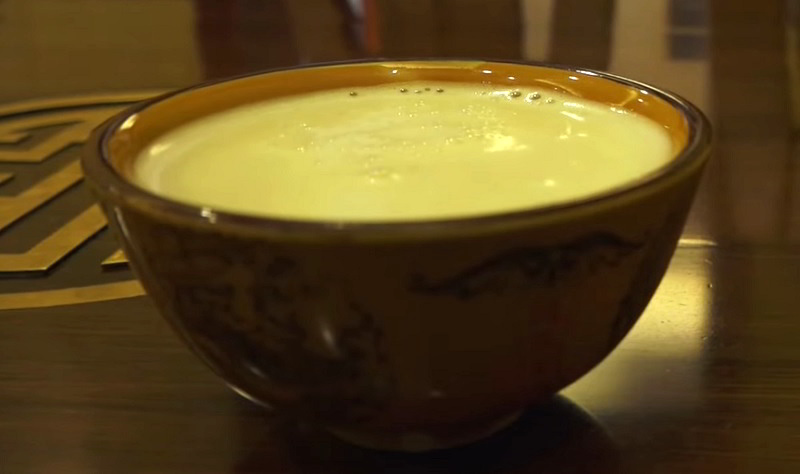
Butter tea, a cherished beverage in the Himalayan regions, holds cultural significance in Nepal, Kashmir, Bhutan, Pakistan, Tajikistan, Afghanistan, Tibet, Kazakhstan, East Turkestan, and various parts of China, Central Asia, and the Caribbean. Traditionally crafted from tea leaves, water, yak butter, and salt, it reflects the region's unique culinary traditions.
Primarily associated with Himalayan communities, butter tea serves as a source of warmth and sustenance in challenging climates. While yak butter was traditionally used, modern variations often incorporate butter made from cow's milk for practical reasons. The beverage is deeply intertwined with the cultural fabric of these regions, offering comfort and nourishment.
Thought to have originated in the Himalayan belt between Greater Tibet and the Indian subcontinent, butter tea embodies the resilience of communities in navigating their challenging environments. Its enduring presence in daily life reflects not only the practical aspects of staying warm but also the cultural importance of shared moments and hospitality.
Yuenyeung
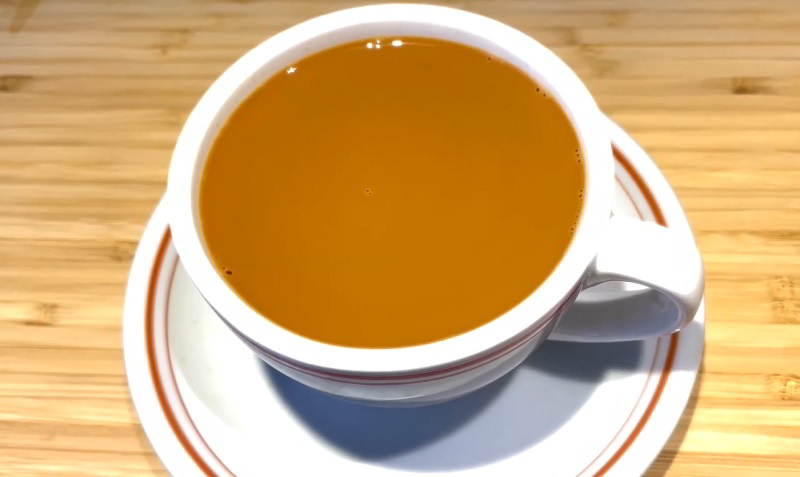
Yuenyeung, originating from Hong Kong, is a beloved beverage that stands as a testament to the city's culinary ingenuity. This unique fusion of coffee and tea has become an enduring symbol of Hong Kong's vibrant food culture, capturing the hearts of locals and visitors alike.
While the preparation of yuenyeung may vary, the general concoction involves blending brewed coffee, black tea, sugar, and milk. The recommended ratio, as suggested by the Hong Kong Leisure and Cultural Services Department, emphasizes three parts coffee to seven parts Hong Kong-style milk tea for an optimal flavor balance. Whether served hot or cold, yuenyeung has transcended its roots in dai pai dongs and cha chaan tengs, finding its way onto diverse restaurant menus.
Yuenyeung's lasting popularity is rooted in its ability to offer a comforting and revitalizing experience, seamlessly marrying the bold richness of coffee with the smooth, sweet notes of Hong Kong-style milk tea. This harmonious blend continues to symbolize the dynamic and flavorful essence of Hong Kong's culinary landscape.
Chinese Tea
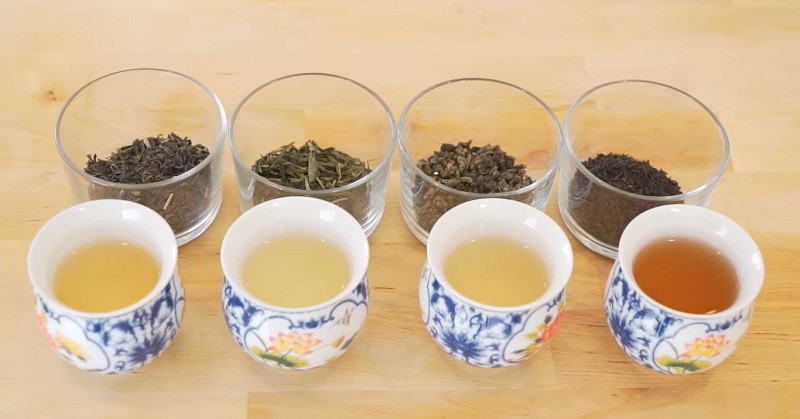
Chinese tea, a diverse spectrum of beverages, encompasses six prominent categories: white, oolong, black, green, yellow, and post-fermented teas, with additional classifications for scented and compressed teas. All these variations are derived from the Camellia sinensis plant and are deeply ingrained in Chinese culture.
Green tea, the most prevalent type, is widely consumed in China and beyond. Chinese teas, originating from different strains of the camellia plant, undergo distinct processing methods after harvesting, leading to an array of flavors.
White and green teas undergo immediate heat treatment after picking to prevent oxidization, also known as fermentation. Oolong teas experience partial oxidation, while black teas undergo full oxidation. The diverse processing steps contribute to the wide range of flavors and characteristics within each tea category.
Chinese teas are not only integral to Chinese cuisine but have gained global popularity, available in restaurants and grocery stores worldwide. The richness of Chinese tea culture lies not only in the plant varieties but also in the intricate processing techniques, creating a vast array of exquisite and nuanced tea experiences.
Chrysanthemum Tea
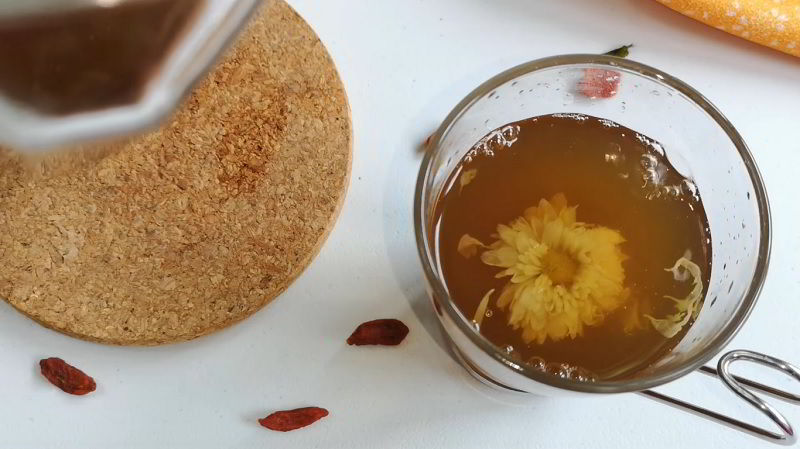
Chrysanthemum tea, an infusion crafted from the blossoms of Chrysanthemum morifolium or Chrysanthemum indicum, holds its cultural roots deep in East and Southeast Asia. Originally cultivated as an herb in China around 1500 BCE, chrysanthemum transformed into a beloved tea during the Song Dynasty.
In the Chinese tradition, the preparation of chrysanthemum tea involves steeping dried chrysanthemum flowers in hot water, typically at 90 to 95 degrees Celsius. The tea-making process often includes multiple infusions, with hot water added to the flowers in the pot after each serving, creating a slightly milder brew.
Adding to the allure, rock sugar or cane sugar is commonly incorporated to enhance the flavor profile. The resulting tea, with its transparent appearance ranging from pale to bright yellow, exudes a delightful floral aroma. This centuries-old beverage not only reflects the elegance of chrysanthemum flowers but also embodies the rich cultural tapestry of tea consumption in the regions where it thrives.
Ginger Tea
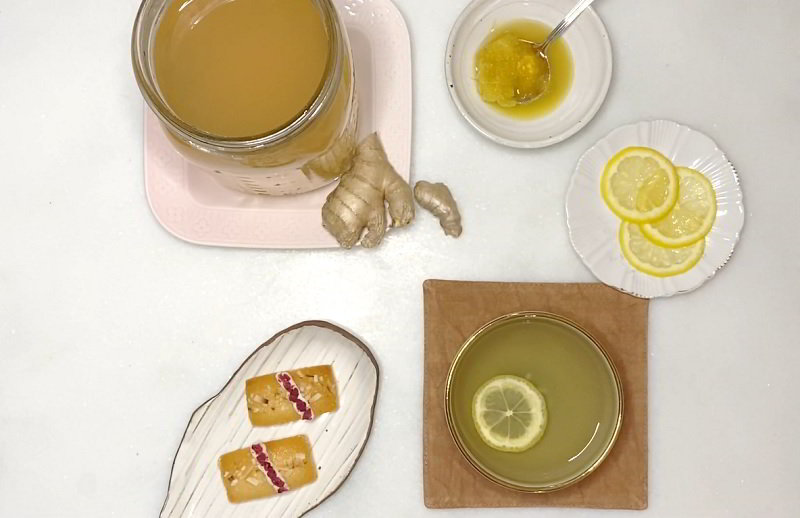
Ginger tea, a herbal elixir derived from the ginger root, boasts a rich history deeply embedded in traditional herbal medicine across South Asia, East Asia, Southeast Asia, and West Asia. Originating in the Tang dynasty, where tea was flavored to offset bitterness, ginger became a preferred choice among tea enthusiasts, alongside other complementary additions like orange peel, cloves, onion, and peppermint. This aromatic and invigorating brew not only satisfies the palate but also encapsulates centuries of cultural and medicinal significance, making it a cherished beverage that transcends geographical boundaries.
Fermented Tea

Fermented tea, a distinguished class of teas, undergoes a transformative journey of microbial fermentation, lasting from several months to extensive years. Throughout this process, tea leaves interact with humidity and oxygen, inducing both endo-oxidation, driven by the tea-leaf enzymes, and exo-oxidation, catalyzed by microorganisms. The result is a deepening of color in both leaves and the brewed liquor. This unique category, commonly known as dark tea, should not be confused with black tea. Pu'er, hailing from Yunnan province, stands out as the most renowned fermented tea, celebrated for its distinct qualities. Rooted in China, fermented tea, also referred to as hei cha or dark tea, has its origins intertwined with the country's rich tea culture. This tea variety is especially prevalent in the warmer southern provinces, often compressed into bricks or cakes for an aging process that enhances its character over time.
Wong Lo Kat
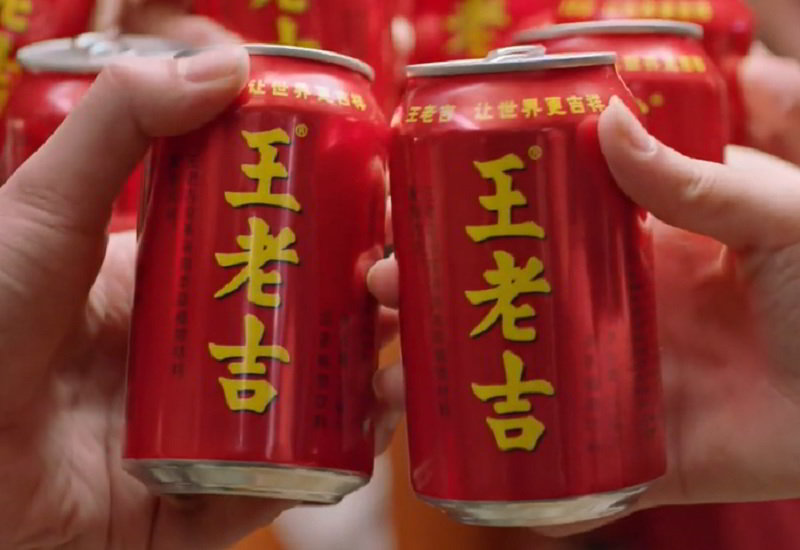
Wong Lo Kat, or Wanglaoji in Mandarin pinyin, stands as a revered figure in the realm of Chinese herbal teas, solidifying its place as one of the nation's most cherished tisane beverages. Its popularity is evident in the diverse array of forms and packaging, spanning cans to cardboard containers, that grace the market today.
This herbal elixir is a harmonious blend of various herbal infusions and decoctions, coupled with carefully chosen sweeteners. What makes Wong Lo Kat truly special is its heritage, with a recipe that has withstood the test of time, passed down through multiple generations. In every sip of this herbal tea, one can taste the legacy of traditional Chinese tea culture, encapsulating centuries of wisdom and a deep connection to nature's remedies. Wong Lo Kat, with its distinct flavor profile and historical roots, has seamlessly integrated itself into the vibrant tapestry of Chinese tea traditions, offering a refreshing and comforting experience to countless tea enthusiasts across the country.
Hong Kong–style Milk Tea
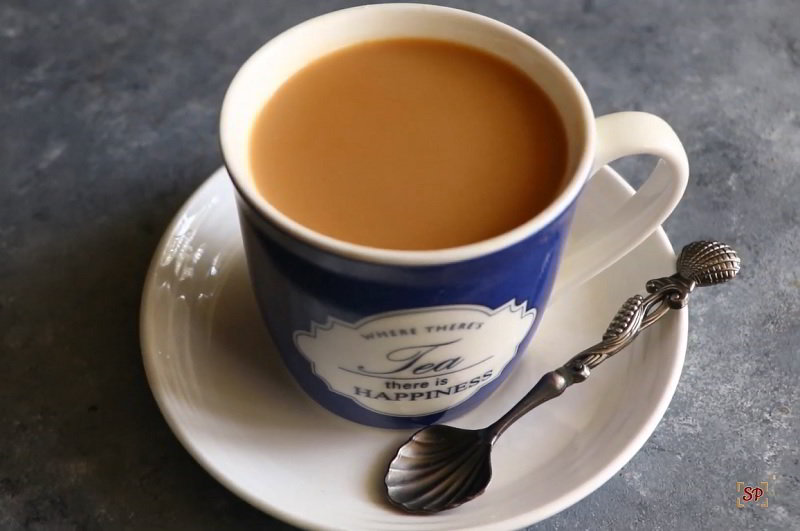
Hong Kong-style milk tea, a revered beverage, is an artfully crafted elixir born from the marriage of Ceylon black tea and a harmonious blend of milks, including the velvety richness of evaporated milk and the sweetness of condensed milk. Imprinted with cultural significance, this tea holds a cherished place in Hong Kong's tea culture and has become a daily ritual, with an astonishing 900 million glasses consumed annually by Hongkongers.
While originating in Hong Kong, this unique tea blend has transcended geographical boundaries, making its way into restaurants worldwide that specialize in Hong Kong cuisine and Western dishes. The method of preparing Hong Kong-style milk tea is so distinctive that it has earned a place on the Intangible Cultural Heritage list of Hong Kong, underscoring its cultural importance.
Ranked 4th in the list of most beloved food and drinks in Hong Kong, as featured in the Top Eat 100 television show in 2012, this iconic beverage has become synonymous with the vibrant spirit of Hong Kong, offering a comforting and flavorful experience to locals and tea enthusiasts globally.
Jin Jun Mei Tea
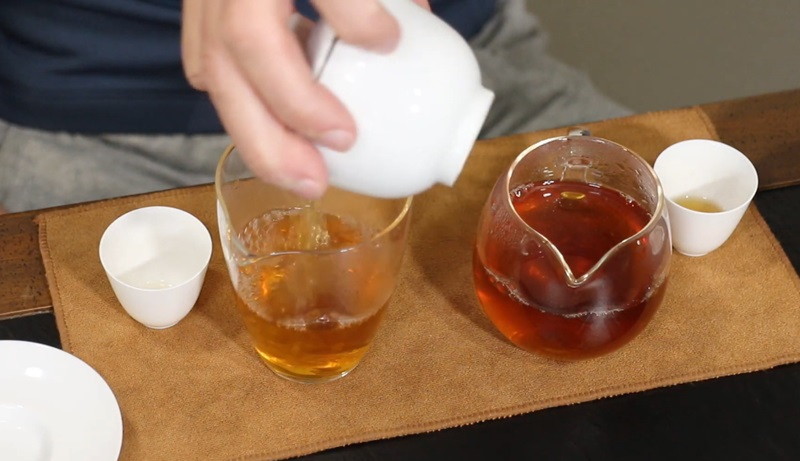
Jinjunmei, an esteemed black tea hailing from the Wuyi Mountains in Fujian Province, China, stands as a testament to the artistry of tea crafting. Meticulously curated from the tender buds harvested in early spring, this tea undergoes a comprehensive process of full oxidation and careful roasting.
The result is a tea of unparalleled quality, characterized by a symphony of flavors that dance on the palate. With a sweet, fruity, and floral profile, Jinjunmei offers a sensory journey that culminates in a lingering and gratifying sweetness. The infusion of the tea unfolds in a brilliant reddish hue, mirroring the exquisite craftsmanship behind this high-end black tea.
Beyond being a tea connoisseur's delight, Jinjunmei has ascended to the echelons of luxury, standing proudly as one of the most coveted and expensive varieties of black tea in China. Its reputation is not merely a reflection of its price tag but a testament to the dedication and expertise woven into each delicate bud, capturing the essence of Wuyi Mountains' tea heritage.
Keemun
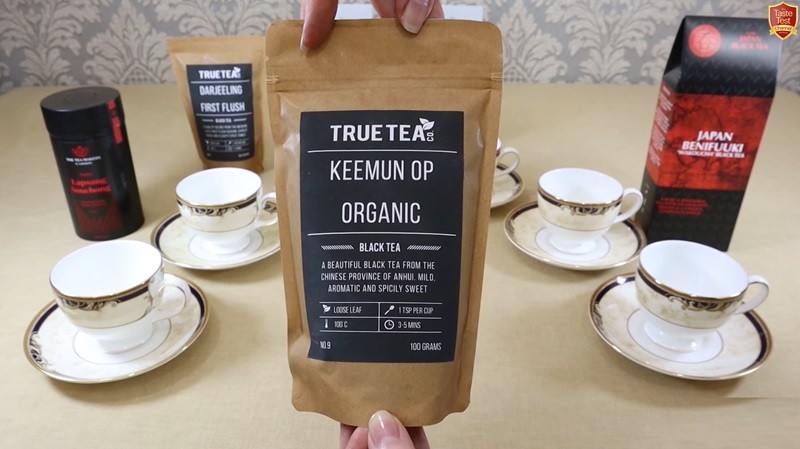
Keemun, a renowned Chinese black tea originating in the late 19th century, has left an indelible mark on the global tea landscape, particularly embraced in Western traditions. Celebrated for its light yet captivating character, Keemun unveils distinctive stone fruit and subtly smoky aromas, creating an olfactory experience that transcends the ordinary.
This exceptional tea entices the palate with a gentle, malty flavor profile, devoid of astringency and reminiscent of the nuanced richness found in unsweetened cocoa. Keemun is often praised for its floral bouquet, lending an air of sophistication to the overall sensory journey, accompanied by subtle wooden notes that add depth to its complex flavor profile.
As a staple in classic blends, Keemun's legacy endures, captivating tea enthusiasts with its harmonious fusion of fragrances and flavors, making it an esteemed choice that stands the test of time.
Yellow Tea
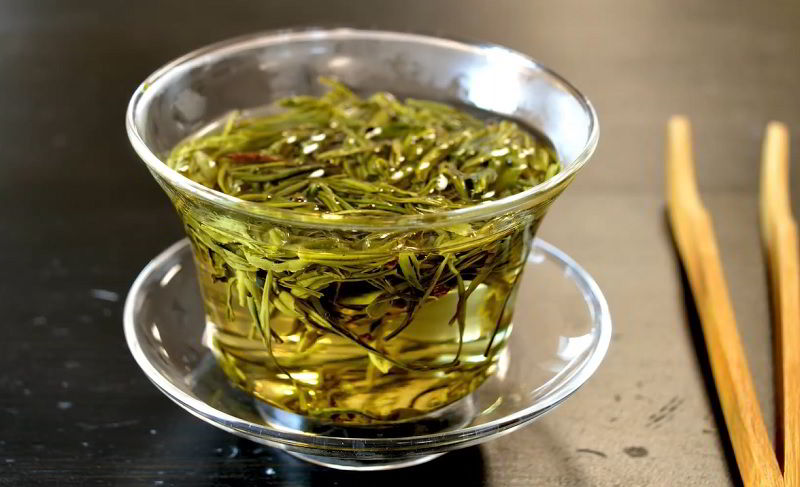
Yellow tea, encompassing varieties like Chinese huángchá and Korean hwangcha, stands as an increasingly rare and prized gem within the realm of teas. Distinguished by a meticulous production process, yellow tea shares similarities with green tea but includes an additional step known as encasing or sweltering. This crucial phase imparts a delicate yellow hue to the leaves during drying, setting yellow tea apart with its unique characteristics.
While yellow tea is often grouped with green tea due to its light oxidation, it undergoes an intricate process aimed at eliminating the typical grassy aroma associated with green teas. As a result, yellow tea emerges as a refined and distinct offering, with its rarity and nuanced flavor profile contributing to its elevated status and appeal among tea connoisseurs seeking a departure from more common varieties. The artful production techniques and subtle differences in aroma make yellow tea a captivating choice for those who appreciate the intricacies of this distinguished tea category.
Jin Xuan Tea
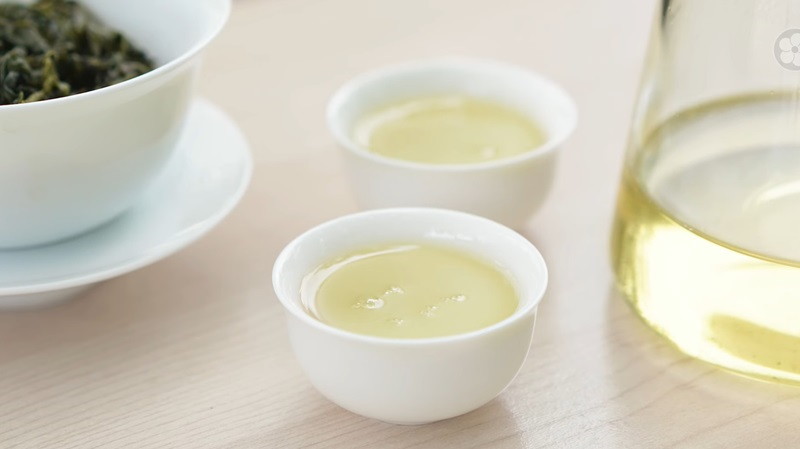
Jin Xuan, colloquially known as "Milk Oolong" (Nai Xiang), stands out as a distinctive oolong tea variety that originated in Taiwan in 1980. Revered for its light, creamy, and floral notes, it has earned its nickname due to a taste often likened to milk. Flourishing at higher altitudes and boasting a 20% higher yield compared to traditional teas, Jin Xuan has become a favored choice among tea farmers in Taiwan and Thailand.
The tea's naturally milky flavor is a result of its inherent characteristics, not from steeping or steaming in milk before roasting, dispelling any myths to the contrary. Extra oxidization during processing enhances the buttery taste, distinguishing Jin Xuan from other oolong varieties. It is crucial for reputable dealers to transparently declare whether the tea is naturally or artificially flavored, with the latter being a result of additives that may mask the genuine tea flavor. This distinction ensures that enthusiasts can fully appreciate the authentic qualities of Jin Xuan, savoring its unique and nuanced profile.
Wuyi Tea
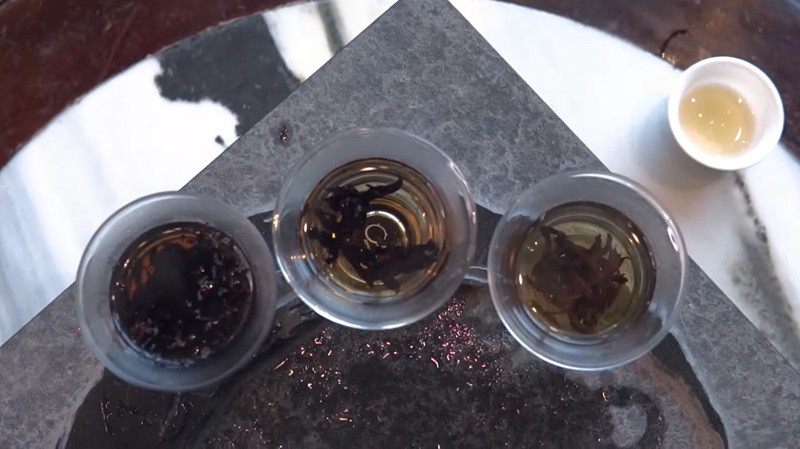
Wuyi tea, renowned by the trade name Bohea, stands as a distinctive category of oolong and black teas meticulously grown in the Wuyi Mountains of northern Fujian, China. This region has historically been a pivotal hub for tea production, giving rise to well-known varieties such as Da Hong Pao and Lapsang souchong, both black and oolong teas, which are believed to have originated in Wuyi.
What sets Wuyi teas apart is the exceptional terroir of the mountainous landscape, contributing to their prized quality. The challenging terrain leads to lower yields from tea bushes, making the resulting teas more exclusive and, at times, costly. Particularly esteemed are teas crafted from leaves of older bushes, representing a limited and expensive selection. The pinnacle of this exclusivity is epitomized by Da Hong Pao, derived from the purported original bushes, ranking among the world's most expensive teas, surpassing the value of gold by weight. While commercial-grade Wuyi tea from lower elevations is more accessible, the true connoisseur recognizes the unparalleled distinction of teas grown in the unique Wuyi Mountains terroir. Commercial Da Hong Pao, often propagated through cuttings from the original plants, ensures the continuation of this exceptional tea legacy.
Taiping Houkui
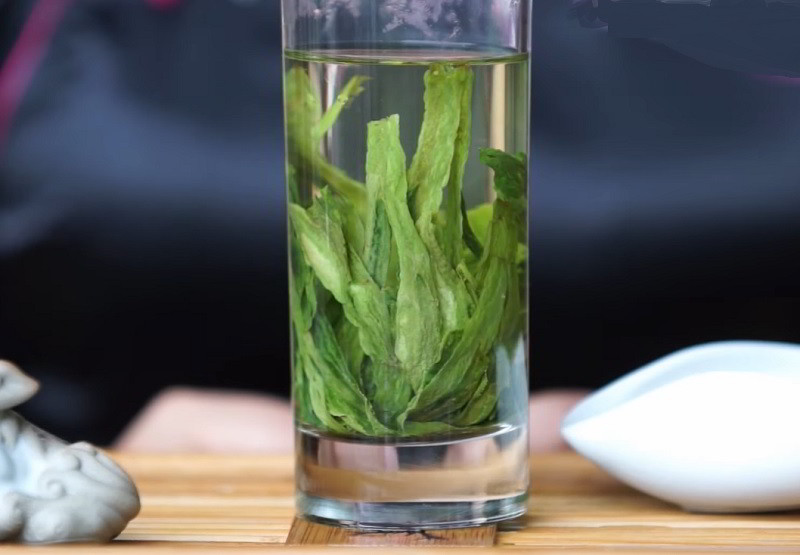
Taiping houkui, also recognized as Monkey Tea or Taiping Hou Kui tea, thrives at the base of Huangshan in the former Taiping Prefecture, Anhui. Planted since the Ming Dynasty and traditionally picked for emperors in the Qing Dynasty, this tea has been commercially produced since the early 20th century, with the epicenter of production around the village of Hou Keng. Notably, it clinched the prestigious "King of Tea" award at China Tea Exhibition 2004, and is occasionally hailed as a China famous tea.
The most exceptional Tai Ping Hou Kui is cultivated in the villages of Houkeng, Hougang, and Yanjiachun, while teas from surrounding areas may share the same name but are priced more affordably.
Biluochun (Pi Lo Chun)
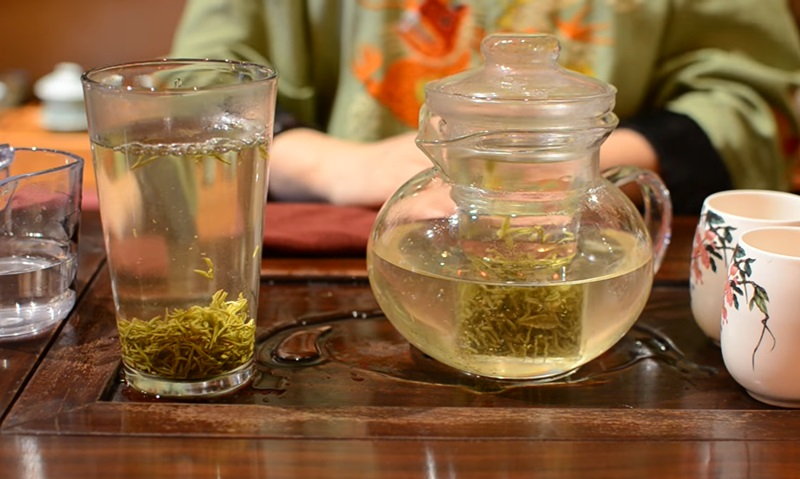
Biluochun is a prestigious green tea originating from the Dongting mountain region near Lake Tai in Suzhou, Jiangsu, China. Its fame is attributed to its unique appearance, featuring a tight spiral reminiscent of snail meat. Renowned for early harvesting, this green tea offers a captivating floral aroma and a delightful fruity taste, enhanced by showy white hairs. This green tea's unique name, translating to "Green Snail Spring," has an intriguing origin. Legend has it that a tea picker, facing limited space in her basket, tucked the tea between her breasts, where body heat enhanced its aroma.
During a visit to Lake Tai in the Qing Dynasty, the Kangxi Emperor was captivated by the rich fragrance of this tea, leading to its elegant renaming as "Green Snail Spring." Highly esteemed by Chinese tea experts, Biluochun's delicate qualities and the story of its discovery contribute to its enduring reputation in the world of green tea.
Jun
-1709278823.jpg)
Jun, also referred to as Xun, is a fermented beverage closely related to kombucha, featuring a unique twist – it is crafted from green tea and honey, diverging from the conventional black tea and cane sugar combination. The brewing process involves the fermentation of sweetened green tea using a symbiotic culture of bacteria and yeast (SCOBY). To enrich the flavor profile, creators often introduce additional ingredients like sweeteners, spices, fruits, and other flavor enhancers. Despite sharing commonalities with other fermented beverages such as water kefir, kombucha, and kvass, Jun stands out with its distinctive use of green tea and honey. This sets it apart, delivering a refreshingly unique drinking experience that appeals to those seeking a delightful and healthful alternative in the world of fermented teas.
Panda Tea
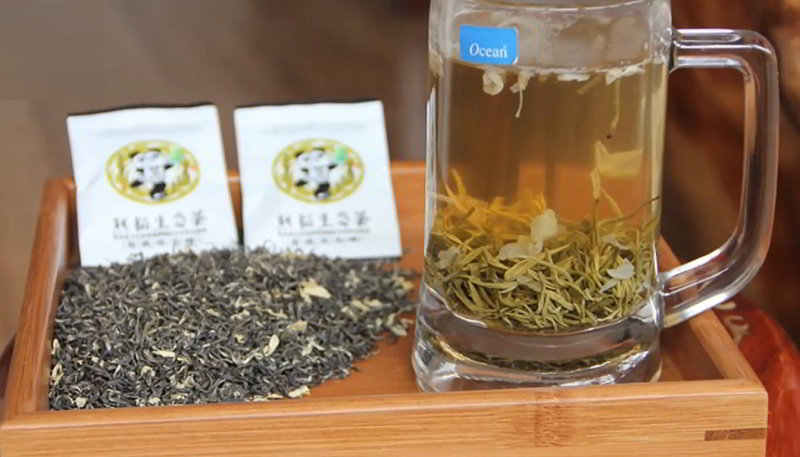
Panda tea, also known as panda dung tea, hails from the Ya’an mountainous region in Sichuan, China, distinguishing itself as a unique type of tea nurtured by the dung of pandas.
Debuting on the market in April 2012, this tea gained notoriety as one of the world's most expensive, with 50 grams (equivalent to approximately 16 cups) fetching $3,500 (£2,200), translating to around $200 (£130) per cup. An Yanshi, a local entrepreneur specializing in panda tea, contends that the tea offers health benefits, emphasizing that pandas exclusively consume wild bamboo, absorbing only about 30% of the nutrients. This unique cultivation method aligns with the ethos of promoting "the culture of recycling and using organic fertilizers," as the tea embraces the natural cycle of nutrients, underscoring sustainability and organic practices in tea production.
Baimudan Tea
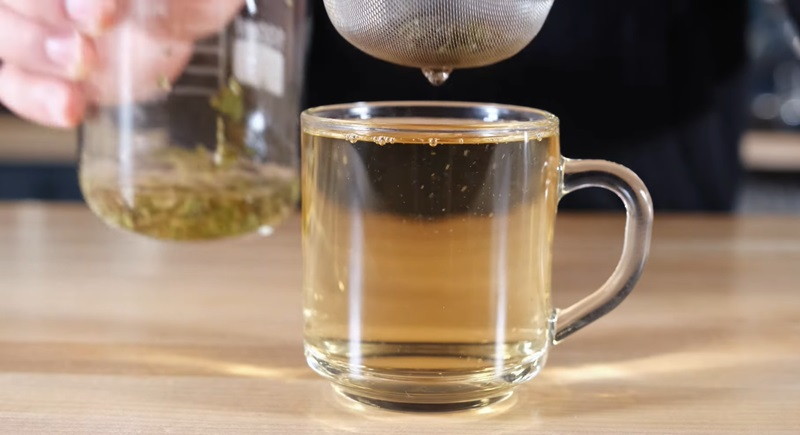
Bai Mudan, a variety of white tea, is meticulously crafted from plucks consisting of one leaf shoot and two immediate young leaves of the Camellia sinensis plant. White tea enthusiasts often favor Bai Mudan for its robust flavor and increased potency when compared to Bai Hao Yinzhen, the other prominent white tea type that solely utilizes leaf shoots, rendering it softer and more subtle.
The distinctive taste profile of Bai Mudan is a result of both the tea processing techniques and the specific tea plant cultivars employed during production. When brewing Bai Mudan, a subtle peony aroma and floral notes gracefully unfold. The tea is ideally brewed with high-quality mineral water, maintaining a temperature range of 70 °C to 80 °C (158 °F to 176 °F). The resulting brew boasts a pale green or golden color, offering a fruity flavor that sits between the delicate Silver Needle and the more robust Shou Mei. The epitome of Bai Mudan excellence is distinguished by its clear infusion, a subtle and lingering fragrance, and a mellow, fresh, and sweet taste that is free from astringency, offering an exceptional and delightful tea experience.
Dongfang Meiren
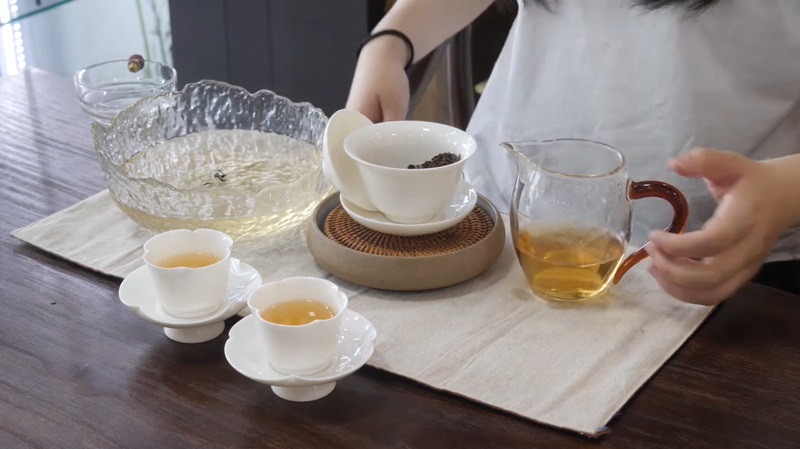
Dongfang meiren, also known as Oriental beauty or white-tip oolong, is an oolong tea originating from Hsinchu County, Taiwan. This unique tea undergoes heavy oxidation without roasting and is cultivated from tea leaves nibbled on by the tea jassid insect. The insect's bite releases terpenes in the leaves, imparting a delightful honey-like flavor.
Marketized as Oriental beauty or champagne oolong in the West, dongfang meiren boasts natural fruity and honey aromas. When brewed, it yields a sweet, non-bitter beverage with a vibrant reddish-orange hue. High-quality dried leaves exhibit a pleasant aroma, featuring dark purple and brown tones accented with white hairs. Dongfang meiren stands out for its distinctive taste profile, making it a sought-after choice among tea enthusiasts worldwide.
Kuding
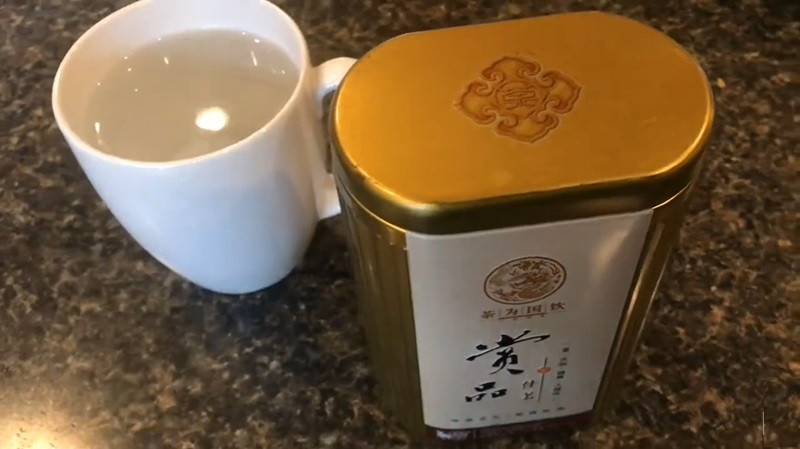
Kuding, a Chinese herbal infusion renowned for its intense bitterness, is crafted from various plant species, with Ligustrum robustum and Ilex kaushue being the most common. While Sichuan and Japan predominantly grow Ligustrum, the rest of China favors Ilex kaushue. Notably, kuding derived from these plants is caffeine-free, in contrast to Ilex paraguariensis, the source of South American mate tea.
Embedded in traditional Chinese medicine, kuding is associated with diverse medicinal properties. It is hailed for dispersing fever, soothing the head and eyes, and detoxifying the body. With applications in treating conditions like the common cold, rhinitis, and bronchitis, kuding is reputed for its ability to calm fidgets and alleviate thirst. Research suggests potential cardiovascular benefits, including blood circulation enhancement and blood pressure and lipid level reduction.
Moreover, kuding is celebrated for promoting mental focus, memory, and weight management. Studies reveal anti-oxidative and anti-inflammatory properties, further enhancing its appeal. This bitter infusion has established itself not only as a therapeutic remedy but also as a symbol of holistic well-being.
Flowering Tea
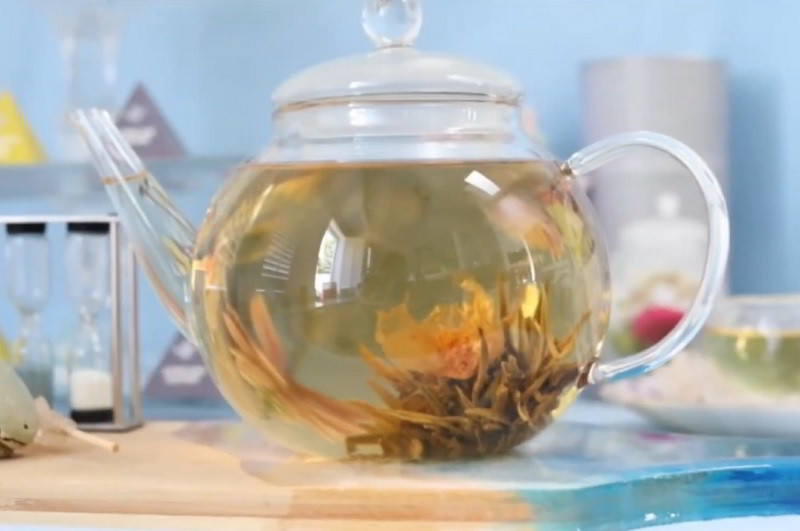
Flowering tea, also known as blooming tea, is a captivating and visually stunning creation crafted from dried tea leaves and one or more dried flowers intricately bound into a bulb. Originating from China, primarily sourced from the Yunnan province, this artistic masterpiece is formed by binding tea leaves and flowers, allowing them to dry into a compact bundle. Upon steeping, the bundle gracefully expands, unfolding in a mesmerizing process that mirrors the blossoming of a flower, with the enclosed flowers emerging as a splendid centerpiece. Commonly utilized flowers include chrysanthemum, globe amaranth, hibiscus, jasmine, lily, and osmanthus.
While the modern incarnation of flowering tea emerged in China during the 1980s, the concept of bundled tea leaves has historical roots that span several centuries. Achieving popularity in Western countries in the early 2000s, flowering tea is often served in transparent containers, allowing the enchanting blooming effect to be visually appreciated. Notably, these bundles can be reused two or three times without compromising the tea's flavor, offering a sustainable and sensory-rich tea-drinking experience.
Baihao Yinzhen
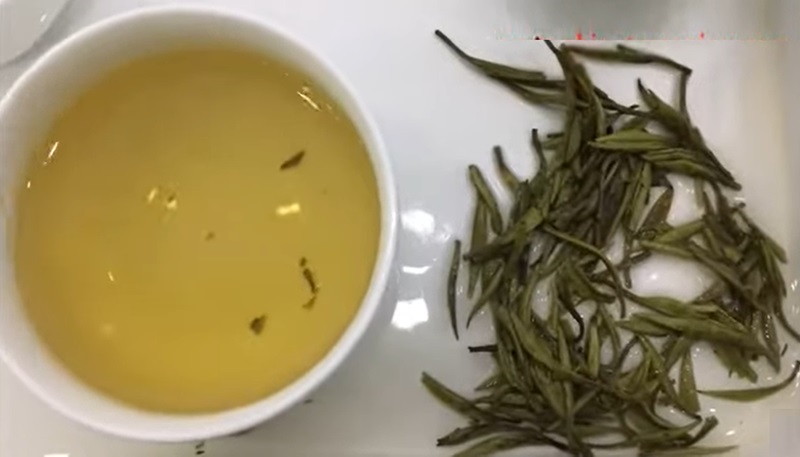
Baihao Yinzhen, renowned as White Hair Silver Needle, stands as an exquisite white tea originating from Fujian Province, China. Distinguished among white teas, it claims the title of the most expensive and prized variety, crafted exclusively from the tender leaf shoots or top buds of the Camellia sinensis plant. The authentic Silver Needles are meticulously produced from specific cultivars of the Large White (Da Bai) tea tree family, ensuring a unique and superior quality. While there are similar-looking productions with downy leaf shoots, many are green teas, differing in taste and biochemical potency from the authentic white tea Silver Needle. This tea, celebrated for its delicate flavor profile and exceptional quality, holds a distinguished place among China's famous teas, exemplifying the artistry and precision involved in white tea production.
Dong Ding Tea
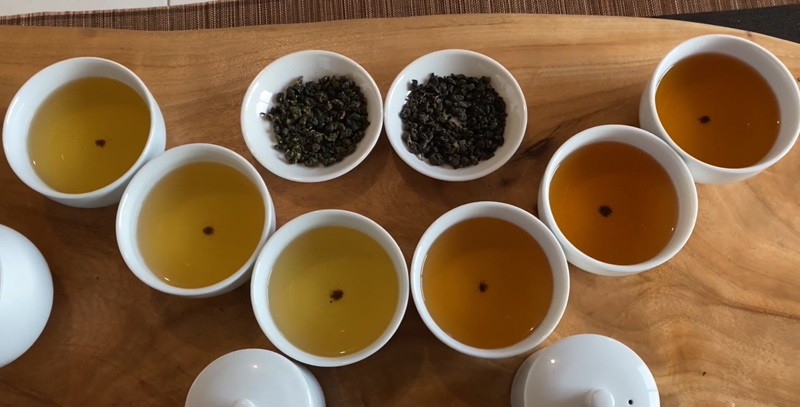
Dong Ding, also spelled Tung-ting, stands as a distinguished oolong tea hailing from Taiwan, with its name translating to "Icy Peak," or "Frozen Summit." The tea is intricately linked to the mountainous region of Dong Ding, situated in the Lugu area of Nantou County, central Taiwan. Originally brought from China's Wuyi Mountains around hundred and fifty years ago, Dong Ding is synonymous with the expertise of Taiwanese tea cultivation.
Comprising leaves with a bud, typically plucked by hand or machine, Dong Ding undergoes a meticulous production process. After an initial withering stage, either indoors, outdoors, or a combination of both, the leaves are bruised on large bamboo baskets, initiating the oxidation process. Subsequent rolling, whether by hand or machine, is followed by a final firing, settling the oxidation at approximately 15–30%. This meticulous crafting imparts a toasty, woody flavor to the tea.
Dong Ding's distinctive characteristics include a rich and complex flavor profile, often described as floral, fruity, and occasionally creamy. The tea embodies the unique terroir of the Dong Ding mountain, reflecting the essence of the region and the artistry of Taiwanese oolong production. Appreciated by connoisseurs, Dong Ding stands as a testament to Taiwan's contribution to the world of exceptional teas.
Dianhong
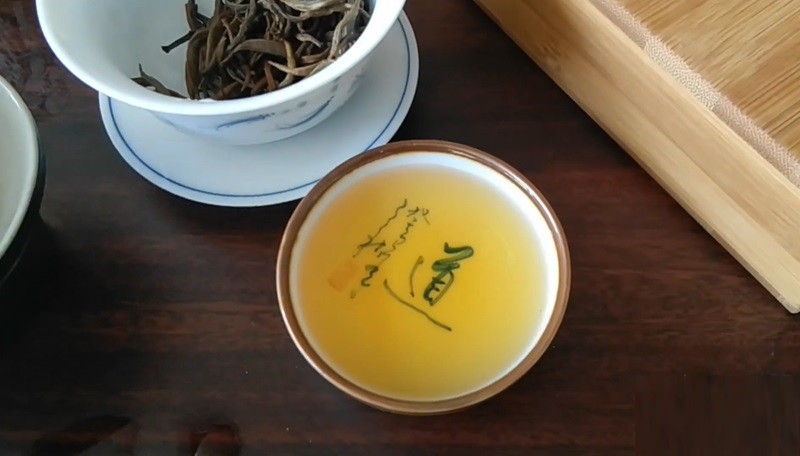
Dianhong tea, a distinguished Chinese red tea cultivated in Yunnan Province, stands out as a gourmet option renowned for its high quality. What sets Dianhong apart from other Chinese red teas is the notable presence of fine leaf buds, often referred to as "golden tips," within the dried tea leaves. This tea variety produces a vibrant brassy golden-orange brew, characterized by a sweet and mild aroma without any astringency. The premium nature of Dianhong is evident in the absence of bitterness, offering a refined tea-drinking experience. However, lower-grade Dianhong teas may yield a darker brownish brew that can exhibit pronounced bitterness. Various varieties fall under the umbrella of Dianhong, including Yunnan Gold, Golden Needle, Broken Yunnan, Pine Needle, and Yunnan Pure Gold, each contributing unique characteristics to the diverse world of Chinese red teas.
Suanmeitang
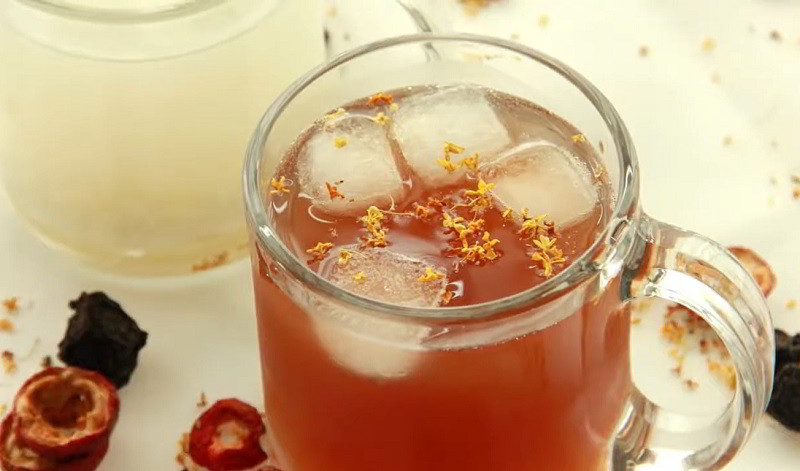
Suanmeitang, also known as the sour prune drink, stands as a traditional Chinese beverage crafted from a blend of rock sugar, smoked plums, and additional ingredients like sweet osmanthus. The distinctive feature of this drink lies in the utilization of sour plums, imparting a unique combination of sweetness, tartness, and a subtle saltiness to the concoction.
Widely available in China and regions with Chinese communities globally, suanmeitang is a popular choice, particularly during the summertime. Served chilled, it offers a refreshing respite from the heat and has become one of the most common summer drinks in China. Beyond its cooling properties, suanmeitang is believed to offer minor health benefits, including aiding digestion and potentially inhibiting the accumulation of lactic acid in the body.
Embodying the essence of traditional Chinese refreshment, suanmeitang remains a flavorful and culturally significant beverage enjoyed for its unique taste profile and perceived health-enhancing properties.
Baozhong Tea
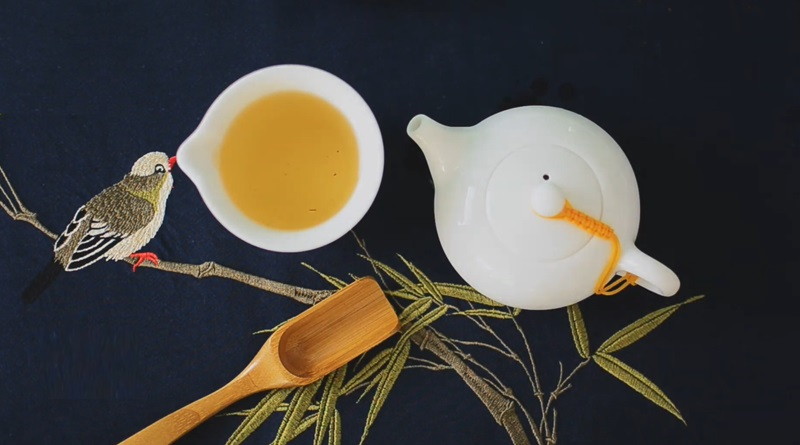
Baozhong tea, also known as pouchong, represents a delicately crafted tea positioned between green and oolong varieties, characterized by a light oxidation, twist shape, and the absence of roasting. Primarily cultivated in Fujian, China, and Pinglin District, Taiwan, this tea exhibits floral notes and a milder flavor profile, aligning it more with oolong tea despite its lighter characteristics.
The Chinese name "Baozhong," meaning "the wrapped kind," alludes to an antiquated practice of wrapping the leaves in paper during the drying process, a method largely abandoned with advancements in tea processing. Baozhong tea, at its pinnacle, emanates a delightful fragrance of flowers and melon, accompanied by a rich and mild taste. The spring harvest typically commences around the end of March, contributing to its designation as a renowned Taiwan "spring tea."
Beyond its exquisite flavor, baozhong tea shares antioxidant activity and antimutagenic properties with green, oolong, and black teas. Notably, it boasts a higher concentration of tea catechins, essential antioxidants, compared to black tea, positioning it as a distinct and healthful member within the spectrum of tea varieties.
Huangshan Maofeng
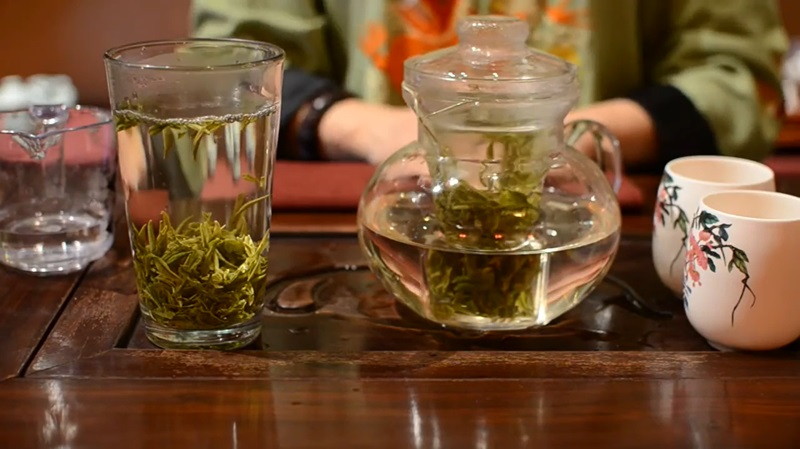
Huangshan Maofeng tea, originating from the southeastern interior of Anhui province, stands as an esteemed green tea and a perennial presence on the prestigious China Famous Tea list. Grown in the vicinity of Huangshan, or Yellow Mountain, renowned for its diverse green tea varieties, Huangshan Maofeng earns its name, translating to "Yellow Mountain Fur Peak." This nomenclature stems from the tea's distinguishing features – the presence of small white hairs covering the leaves and the processed leaves' shape resembling the peak of a mountain.
The optimal harvest time for this tea is during the early spring, preceding China's Qingming Festival. The meticulous picking process involves exclusively selecting the new tea buds and the adjacent leaf. Local tea farmers liken the appearance of these leaves to orchid buds, adding a poetic dimension to the tea's essence. Huangshan Maofeng tea, celebrated for its unique characteristics and association with the picturesque Yellow Mountain, epitomizes the artistry and heritage embedded in China's rich tea culture.
Lotus Tea

Lotus tea, crafted from the diverse elements of the lotus plant, including leaves, roots, flowers, seeds, fruit, or embryos, offers a distinctive and revered infusion. Notably, lotus leaf tea, known as yeonnip-cha in Korean, spotlights the tender leaves of the lotus. These leaves undergo a meticulous heat-treating process, either through roasting or steaming, followed by careful drying. Additionally, some variations include the infusion of fresh lotus leaves to capture their essence directly.
Lotus tea is celebrated for its unique profile, encapsulating the subtle yet distinctive flavors and aromas inherent in the various components of the lotus plant. Its cultural significance and versatility have made it a cherished beverage in regions where lotus cultivation thrives. The infusion process carefully extracts the essence of the lotus, presenting a captivating tea that reflects the botanical richness of this revered aquatic plant without delving into specific preparation methods.
High-mountain Tea
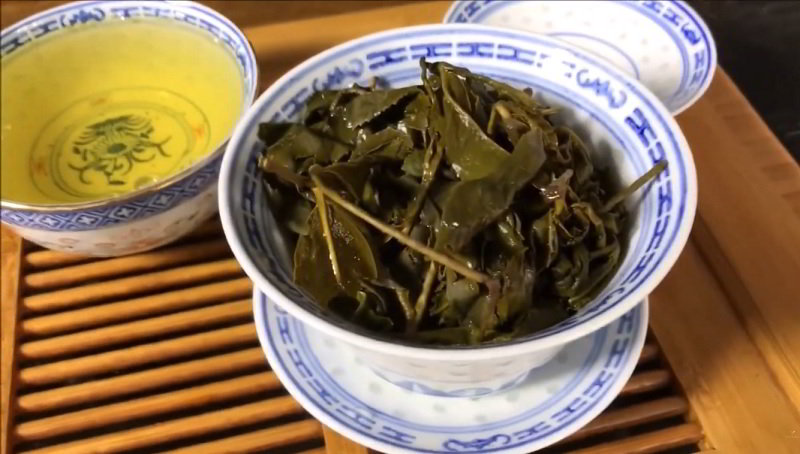
High-mountain tea, also known as gaoshan tea, encompasses a collection of exceptional Oolong tea varieties cultivated in the elevated landscapes of central Taiwan. Flourishing at altitudes surpassing 1,000 meters (3,300 feet) above sea level, these teas include distinguished types such as Alishan, Yu Shan, Wushe, Dayuling, and Lishan. Nestled in the high mountain ranges of Nantou and Chiayi Counties, the region boasts an ideal climate with high humidity and natural precipitation, providing an optimal environment for cultivating tea plants.
Renowned for its unique characteristics, High Mountain Oolong preserves all the original nutrients found in unfermented green tea. Unlike traditional green teas with a grassy taste, this Oolong variety offers a nuanced profile featuring hints of chestnut flavor and nutty aromas. The fermentation process employed ensures a tea that is both flavorful and rich, free from the harsh elements commonly associated with unprocessed green teas. The distinctive qualities of High Mountain Oolong highlight the significance of its origin and cultivation in the mountainous terrains of Taiwan.
Shoumei Tea
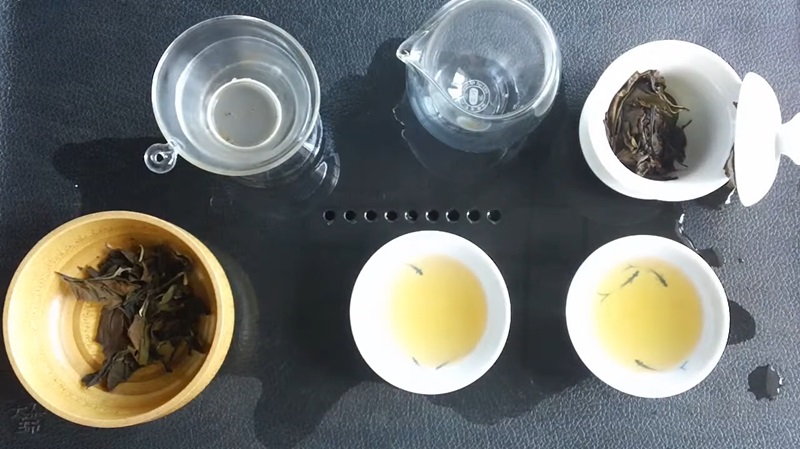
Shoumei, a distinctive white tea, is crafted from naturally withered upper leaves and tips, offering a robust flavor profile reminiscent of lighter oolong teas. Primarily cultivated in the Guangxi Province and Fujian Province of China, this tea undergoes a unique production process. Plucked later than Bai Mudan, Shoumei may display a darker color, yet it maintains a proportionate green hue, showcasing its quality. Lower-grade variants may feature a golden color with black and red leaves, resulting in a brew that exudes depth and richness.
As a fourth-grade tea, Shoumei is a by-product of Baihao Yinzhen tea production, utilizing Da Bai or Large White leaves. The brewing process allows for experimentation, with various combinations yielding intriguing results. It is essential to use high-quality mineral water to enhance the tea's sweetness and aroma, avoiding over-brewing to prevent bitterness and excessive strength.
Traditionally, white teas like Shoumei are brewed at lower temperatures compared to black teas, emphasizing the importance of meticulous preparation for a delightful tea-drinking experience.
Xinyang Maojian Tea
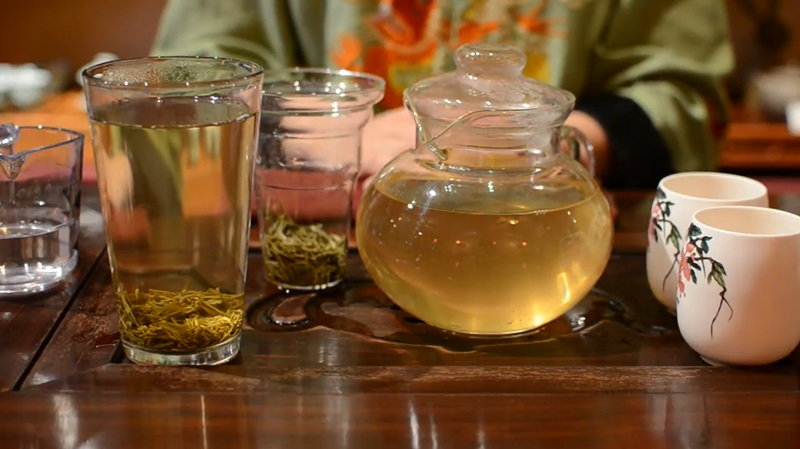
Xinyang Maojian tea, also recognized as Yu Maofeng, stands as a distinguished green tea originating from Xinyang, Henan, frequently earning the distinction of a renowned Chinese tea. Acknowledged among the top ten famous teas in China and esteemed as a specialty in Henan Province, it holds a significant place in the world of Chinese tea.
The primary regions for production include Pingqiao District, Xin County, Guangshan County, Xinhe City (now Xinyang City), and Luoshan County, cultivated by skilled Han tea farmers. Its historical roots trace back to the early years of the Republic of China when the top tea houses in Xinyang Tea District collectively produced the high-quality Benshan Maojian tea, officially christened "Xinyang Maojian."
Renowned for its unique and delectable flavor, Xinyang Maojian exhibits a yellowish hue, particularly when steeped in water. The tea liquor boasts a slight thickness, offering a refreshingly brisk taste with a lingering aftertaste that adds to its distinct appeal, solidifying its status as a prized tea variety.
Kelp Tea
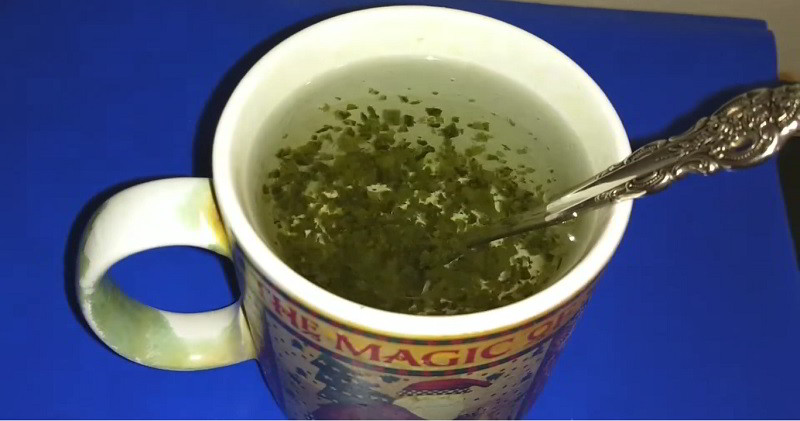
Kelp tea, known as kobu-cha or haidai-cha in China, konbu-cha in Japan, and dasima-cha in Korea, is a traditional East Asian beverage crafted by steeping kelp in hot water. This tea can be prepared using either dried kelp powder or julienned kelp, offering flexibility in its production.
To make powdered tea, cleaned and dried kelp undergoes a process of pan-frying and pounding, resulting in a fine powder. When preparing a cup, two to three spoons of this kelp powder are typically used for a hot water infusion. The flavor profile can be customized by incorporating optional additions such as honey or sugar, enhancing the taste to suit individual preferences. With its roots deeply embedded in East Asian traditions, kelp tea not only provides a unique drinking experience but also showcases the versatility of kelp as an ingredient in the culinary landscape.
Rougui Tea
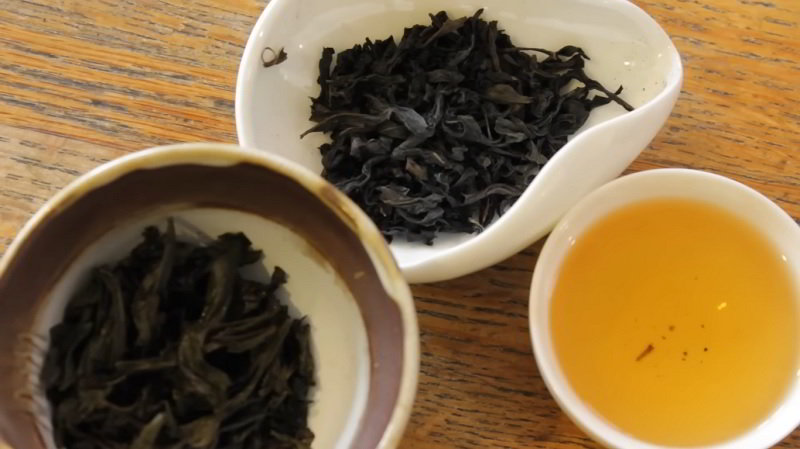
Rougui tea, a distinctive variety of the tea plant flourishing in the Wuyi Mountains, is expertly transformed into oolong tea, with its name translating to "cassia." Originating during the Qing dynasty, Rougui tea boasts a unique processing approach that contributes to its complex character.
Traditionally processed, Rougui exhibits a dark, dry leaf, emanating a rich aroma that reflects its depth and authenticity. Alternatively, adhering to contemporary consumer standards introduces a modified processing method, resulting in a leaf displaying a blend of colors and a more pronounced fruity aroma. The versatility of Rougui tea shines through its nuanced preparation, unlocking a sweet aroma that endures through up to seven steepings, underscoring its resilience and the artistry involved in extracting its distinctive flavors. Whether adhering to tradition or embracing modern techniques, Rougui tea stands as a testament to the rich heritage and dynamic evolution within the world of oolong teas.
Chun Mee

Chun Mee, a widely favored green tea, distinguishes itself with its dusty appearance and a flavor profile characterized by increased acidity and diminished sweetness compared to its green tea counterparts. Originally cultivated exclusively in the Jiangxi province of China, Chun Mee tea has transcended its regional roots and is now cultivated in various locations.
This green tea variant is categorized into different grades, each denoted by a numerical designation. The nuanced grading system reflects the diverse qualities and characteristics of Chun Mee tea, allowing for a spectrum of options catering to varying preferences. In scientific exploration, Chun Mee, alongside Assam Bukial tea, has undergone scrutiny to understand the intricacies of caffeine infusion. The study discerned that the diffusion of caffeine through the tea leaves is a process marked by substantial hindrance, shedding light on the intricate dynamics that contribute to the beverage's unique composition. Chun Mee's journey from its origins in Jiangxi to its widespread cultivation showcases its enduring popularity and adaptability in the realm of green teas.
Golden Monkey Tea
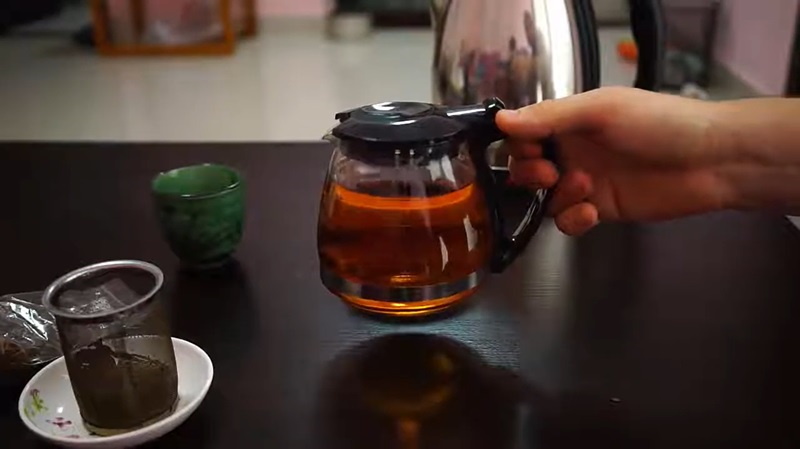
Golden Monkey tea, hailing from the Yunnan and Fujian provinces in China, is a distinguished black tea known for its exceptional quality. Sourced meticulously, only the bud and the first leaf are handpicked, featuring delicate pale gold threading that sets it apart. Serving as the black tea counterpart to Silver Needle white tea, Golden Monkey tea presents a unique flavor profile marked by subtle honeyed peach notes and a notably low astringency.
The name "Golden Monkey" is a term encompassing various black teas, emphasizing the importance of observing the leaves and sampling to discern specific flavor components. Hand-processed each spring, the tea undergoes a meticulous plucking process, contributing to its reputation as one of the finest black teas available. The leaves, resembling monkey claws, grow at elevations of 1200 meters in the misty and mountainous Yunnan province, which boasts a rich tea-growing history spanning 1700 years.
24 flavors

24 Flavors, a renowned Cantonese herbal tea, is consumed not merely for its refreshing taste but primarily for its medicinal attributes. The intriguing name stems from the tea's composition, incorporating a diverse array of ingredients, typically around 24. However, the exact formulation is not standardized and may fluctuate, with variations ranging from 10 to over 28 ingredients, offering a dynamic blend.
Characterized by a slightly bitter taste, 24 Flavors herbal tea is tailored to address imbalances associated with an excess of 'hot air' or 'yeet hey' in traditional Chinese medicine. The tea's versatility is underscored by its adaptability to different recipes, allowing producers to experiment with various combinations of herbs and botanicals.
This herbal concoction reflects the rich heritage of Cantonese traditional medicine, where diverse natural elements are carefully selected and combined for their potential health benefits. Beyond its distinctive flavor, 24 Flavors herbal tea stands as a testament to the cultural significance of herbal remedies in Cantonese culinary practices, offering both a sensory experience and a holistic approach to well-being.
Hyson
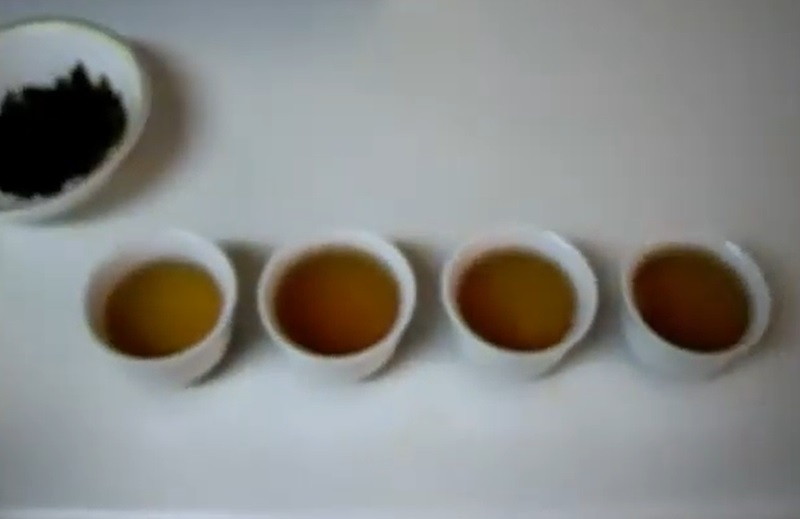
Hailing from the lush landscapes of Anhui province in China, Hyson, also known as Lucky Dragon Tea, is a distinctive Chinese green tea that boasts a rich heritage. Crafted from the tender leaves of the tea plant, Hyson undergoes a meticulous rolling process, imparting its characteristic long and twisted appearance that gracefully unfurls upon brewing.
Hyson tea is categorized into three grades: Cheng Si, Mi Si, and Fu Si. While Hyson has sometimes been associated with lower-grade teas, it is essential to recognize the nuanced distinctions within this classification. Young Hyson, harvested in the pre-rain season, emerges as a symbol of high-quality tea. Its early harvest imparts a full-bodied, pungent flavor profile, evoking a golden hue that adds to its allure.
Contrary to the misconception of Hyson as a run-of-the-mill tea, its higher-grade counterpart, young Hyson, stands as a testament to the diversity and excellence found within the realm of Chinese green teas. This tea's journey from the verdant fields of Anhui reflects the artistry and craftsmanship inherent in traditional Chinese tea production.
Doujiang
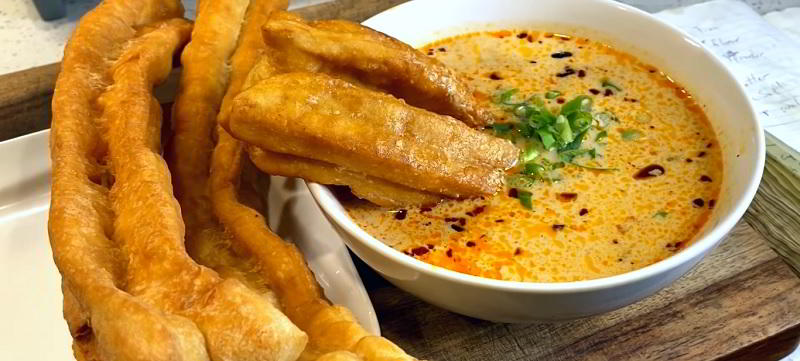
Doujiang, a staple in Chinese cuisine, refers to fresh soy milk that graces tables with its versatile presence. This culinary delight can be relished either piping hot or refreshingly cool, offering a canvas for both sweet and savory interpretations. Some variations involve a delicate curdling process with the infusion of vinegar, further expanding its culinary possibilities.
Served alongside the iconic youtiao, Doujiang is a favored choice for breakfast, embodying the essence of a comforting and nutritious start to the day. It serves as a testament to the rich tapestry of Chinese breakfast traditions.
It's essential to note the linguistic nuance between doujiang and dounai in Chinese culture. Doujiang encompasses the freshly prepared soy milk, while dounai refers to the packaged, dairy-like soy milk found in cartons, often used in beverages like soy lattes. This linguistic distinction also extends to the vessel of presentation, with doujiang traditionally served in bowls and dounai finding its place in cups.
In the realm of Chinese culinary heritage, doujiang stands as a dynamic expression of flavors, embodying the warmth and diversity that characterize Chinese breakfast rituals.
Future Cola

Future Cola, a carbonated beverage with a cola flavor, emerges from the production lines of Hangzhou Wahaha Group in China. Capturing a notable 12-15% market share, it secures its position as the third-largest soft drink manufacturer in China, trailing behind industry giants Coca-Cola and Pepsi Cola. Recognized in the United States as China Cola under the distribution umbrella of Reed's, Inc., the beverage carries the moniker Future Cola in its domestic market. This fizzy concoction has carved its space in the competitive soft drink landscape, offering a taste that resonates with consumers and contributing to the diverse array of choices available in the ever-evolving world of carbonated beverages.
Red Bean Ice
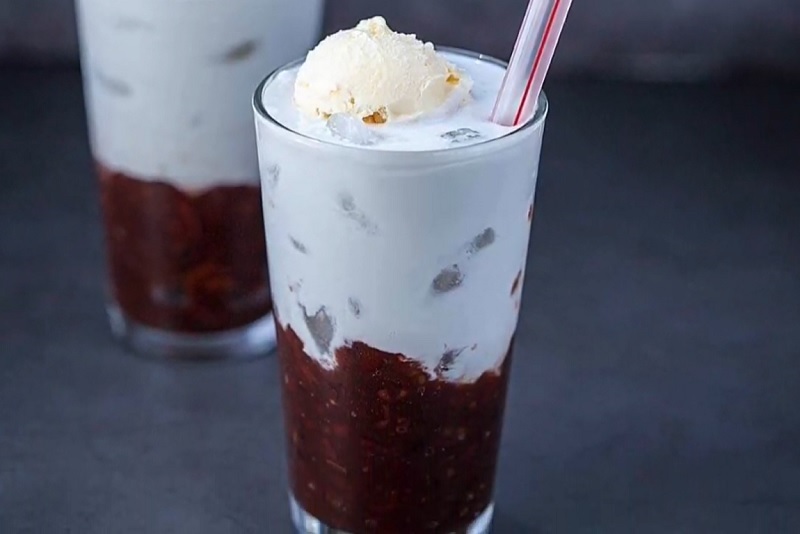
Red bean ice, a refreshing beverage prevalent in Hong Kong, graces the menus of establishments like cha chaan teng, adding a sweet respite particularly popular during the summertime. This chilled delight comprises adzuki beans, laced with the creamy goodness of evaporated milk and a drizzle of light rock sugar syrup. The combination creates a harmonious blend of flavors and textures, capturing the essence of a delightful dessert. Red bean ice often undergoes a delectable transformation by crowning it with a scoop of ice cream, evolving into the beloved red bean ice cream dessert. Originating in the 1970s, this beverage has become a cherished part of Hong Kong's culinary landscape, offering a delightful mix of adzuki beans, milk, and syrup over ice. Some variations include the addition of chewy flavored jelly, enhancing the overall experience of this cool, sweet treat.
Shui Xian
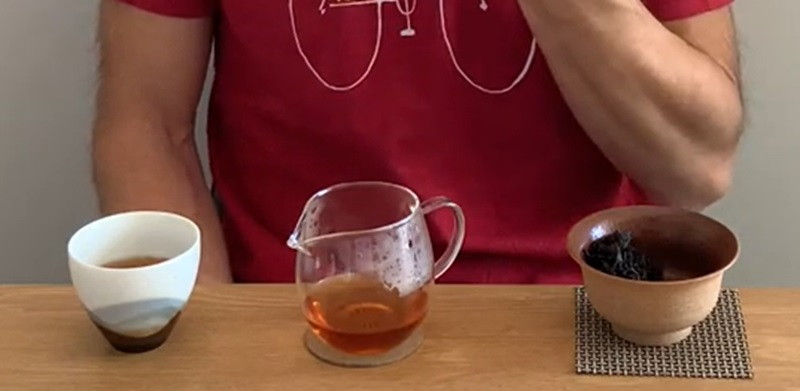
Shui Xian, a distinguished cultivar of Camellia sinensis, boasts a rich history as a traditional oolong tea originating from the renowned Wuyi Mountains in Fujian, China. Its distinct character is revealed through the deep amber hue that graces the infused liquid, a hallmark shared by many esteemed Wuyi oolong teas. Beyond its roots in the Wuyi region, Shui Xian has found a second home in the tea fields of Taiwan, where it continues to captivate tea enthusiasts with its unique qualities. This cultivar contributes to the diverse tapestry of oolong teas, showcasing the artistry and craftsmanship associated with the cultivation and processing of these leaves. Whether enjoyed in its authentic Wuyi form or embraced in the terroir of Taiwanese tea gardens, Shui Xian stands as a testament to the versatility and allure of this venerable tea variety.
Lu'an Melon Seed Tea
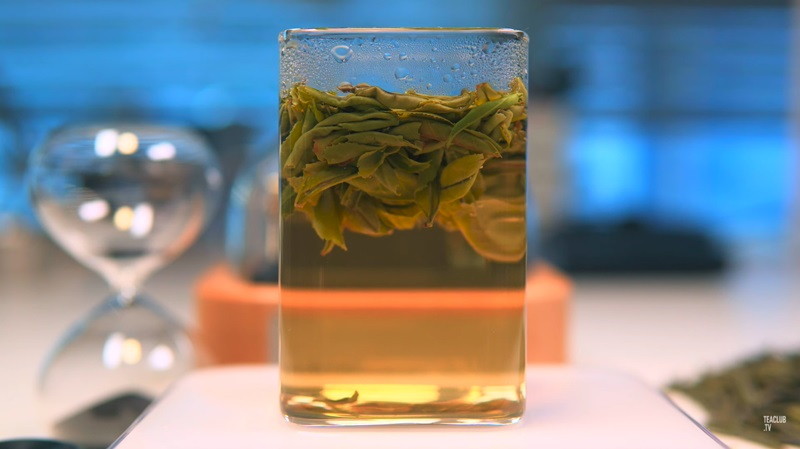
Lu'an Melon Seed, also known as Lu'an Leaf, stands out as a distinguished green tea hailing from Lu'an City in Anhui Province, China. Recognized on numerous lists of eminent Chinese teas, this green tea variety holds a revered status in the world of tea connoisseurs. The name "Lu'an Melon Seed" stems from the distinct flat and oval shape of the processed tea leaves, resembling the seeds of a melon. A departure from the common practice of using new buds, Lu'an Melon Seed Tea employs the second leaf on the tea branch, adding to its unique profile.
The tea-making process involves meticulously removing the central vein from each leaf, followed by pan-frying and shaping to halt oxidizing enzymes and achieve the desired dryness. This careful craftsmanship contributes to the tea's exceptional flavor and appearance. Lu'an Melon Seed Tea not only embodies the regional tea-making traditions of Anhui Province but also stands as a testament to the artistry involved in producing iconic Chinese green teas.
Junshan Yinzhen
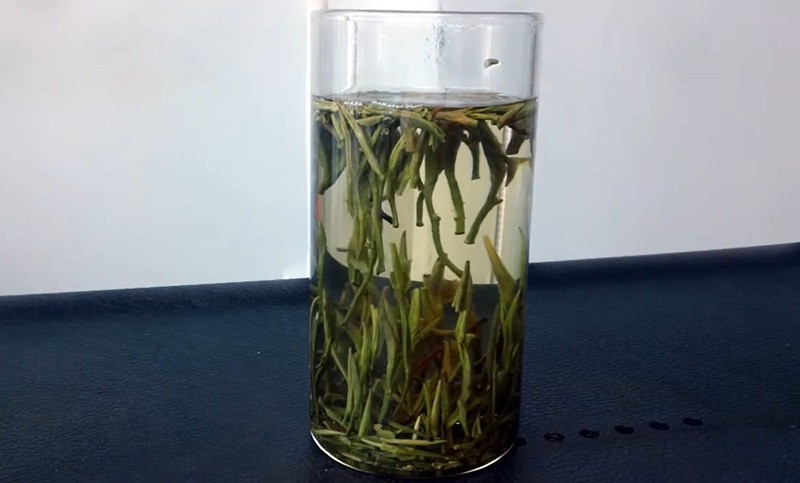
Junshan Yinzhen, a coveted yellow tea originating from Junshan Island in Hunan Province, China, holds the distinction of being China's rarest tea and claims a spot among the esteemed Ten Chinese Famous Teas. It's important to note that while similar tea trees are planted around Dongting Lake, only those from Junshan Island are rightly designated as Junshan Yinzhen.
This tea, often referred to as the preferred choice of Chairman Mao Zedong, shares a resemblance with the White tea Yinzhen, also known as Bai Hao Yinzhen. The delicate, downy buds and leaves contribute to the tea's unique character. Despite being classified as a yellow tea, Junshan Yinzhen is occasionally marketed as White tea, showcasing the nuanced categorization within the world of teas. Its scarcity and historical significance, combined with its association with prominent figures, elevate Junshan Yinzhen to a level of reverence among tea enthusiasts and collectors.
Arrowroot Tea
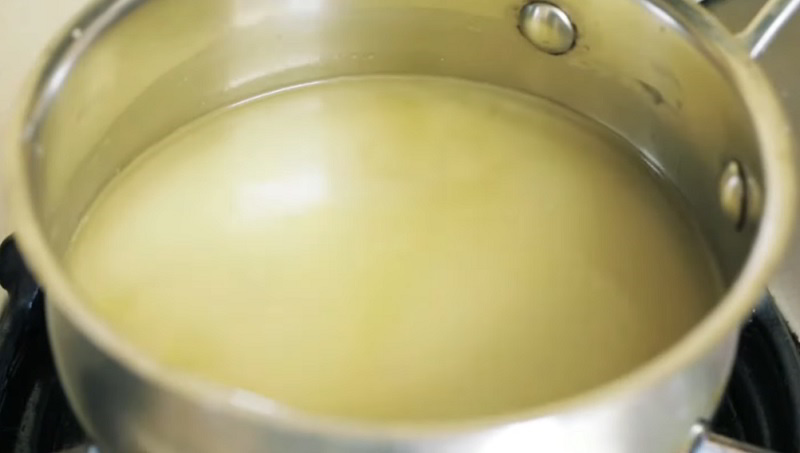
Arrowroot tea, known as kudzu tea in East Asian tradition, is crafted from East Asian arrowroot, a specific variety of kudzu. This traditional beverage has roots in East Asian cultures and is prepared by infusing the arrowroot in hot water. The tea offers a unique flavor profile and is appreciated for its cultural significance. As an emblem of East Asian tea culture, arrowroot tea brings forth a connection to traditional practices and the use of indigenous ingredients. Enjoyed for both its taste and cultural heritage, arrowroot tea stands as a testament to the rich diversity of teas found in East Asia.
Anji Bai Cha
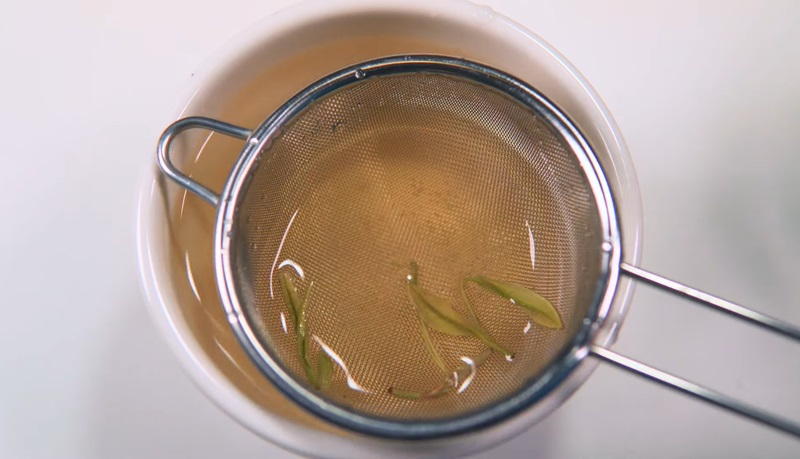
Anji bai, also known as Anji white, is a premium green tea originating from Anji County, Zhejiang Province, China, and is now also cultivated in Changxing County, Zhejiang Province. This rare tea cultivar, discovered in 1982, is distinguished by its elongated yellow leaves, featuring a distinctive fold along their length. Despite its name, Anji bai is classified as a green tea, and its scarcity contributes to its status as one of China's most sought-after and expensive teas.
Renowned for its limited cultivation and short harvesting period, Anji bai offers a unique flavor profile. Its rarity and high demand contribute to its premium status in the world of Chinese teas. In addition to its exceptional taste, a 2010 study highlighted the tea's health benefits, revealing its richness in polysaccharides, which demonstrated the potential to inhibit the hemolysis of blood cells. Anji bai stands as a testament to the diversity and sophistication of China's tea culture, offering a distinctive and prized tea-drinking experience.
Cloud Tea
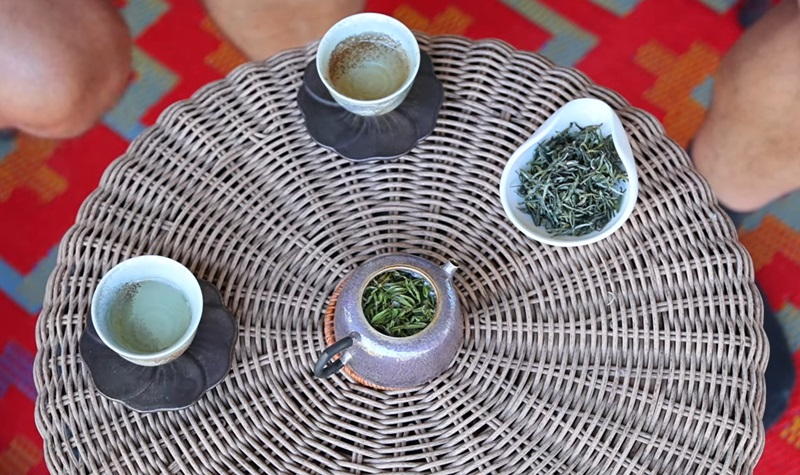
Cloud tea, named after the clouds of Le Mountain, boasts a rich history and esteemed reputation. Originally known as Le tea during ancient times, it gained prominence during the Tang dynasty when it was offered as tribute to the emperor. Revered Chinese tea master Lu Yu, in his influential work "The Classic of Tea," acknowledged the significance of cloud tea in Le Mountain, contributing to its enduring legacy.
Renowned for its thin leaves, aesthetic beauty, fresh color, cool taste, and captivating aroma, cloud tea has garnered exceptional acclaim. Its exceptional qualities have earned it a distinguished reputation, both within Hunan Province and beyond. The legacy of cloud tea is deeply rooted in centuries of tradition, making it a symbol of China's rich tea culture and a testament to the enduring allure of this esteemed beverage.
Huangjin Gui
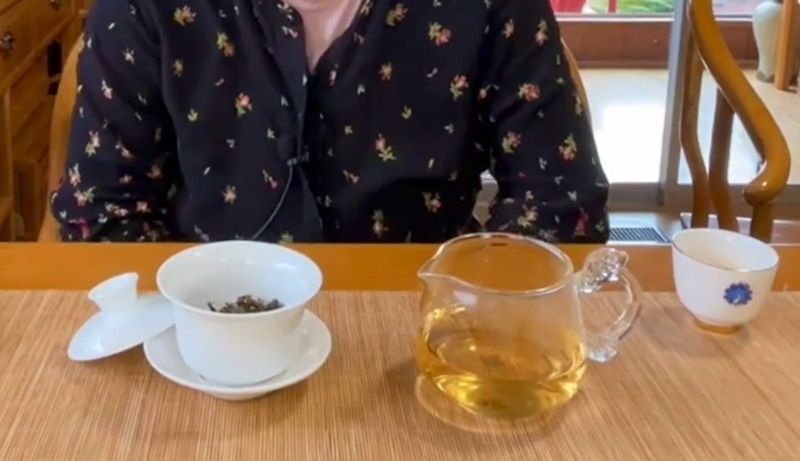
Huangjin Gui, a distinguished Chinese oolong tea hailing from Anxi in Fujian province, stands out as a premium variety celebrated for its unique characteristics. The name, translating to "Golden Osmanthus," reflects both the yellow-golden hue of its budding leaves and the captivating floral aroma reminiscent of Osmanthus flowers.
This oolong tea, akin to Tieguanyin but with a touch less oxidation, offers a remarkable balance. It captures a delicate, flowery fragrance that sets it apart from the astringency of green tea and the robustness of red/black tea. Huangjin Gui, with its distinctive qualities, embodies the artistry and complexity inherent in Chinese oolong teas. Its subtle yet pronounced flavors, coupled with the aromatic allure, make it a sought-after choice among tea enthusiasts, showcasing the rich diversity and craftsmanship found in the world of Chinese tea culture.
Huoshan Huangya Tea
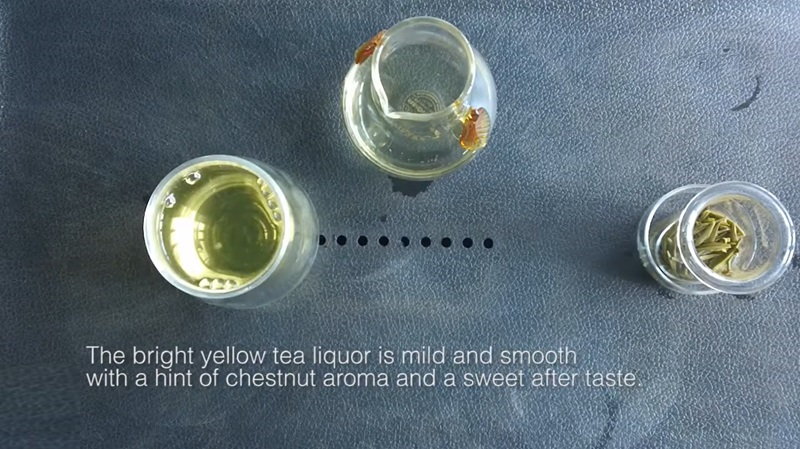
Huoshan Huangya tea, a distinguished yellow tea originating from Huoshan County in Anhui Province, China, holds a historical legacy dating back to the Ming Dynasty. Designated as an imperial tribute tea, the meticulous harvesting of Huoshan Huangya unfolds in early April, specifically selecting cuttings featuring either one bud and one leaf or one bud accompanied by two unopened leaves.
Distinguished by shiny dry leaves reminiscent of Huang Shan Mao Feng tea, Huoshan Huangya unfolds a unique sensory experience upon steeping. The infusion reveals a striking green-yellow color, while the tea's flavor profile emerges with pronounced sweetness and nuttiness. In the tradition of bud teas, both the color and fragrance are subtly nuanced, contributing to its allure.
With roots deeply embedded in Chinese tea culture and a heritage that spans centuries, Huoshan Huangya stands as a testament to the artistry and craftsmanship preserved in the production of exceptional yellow teas. Its significance as an imperial tribute adds an extra layer of prestige to this remarkable tea variety.
Qilan Tea
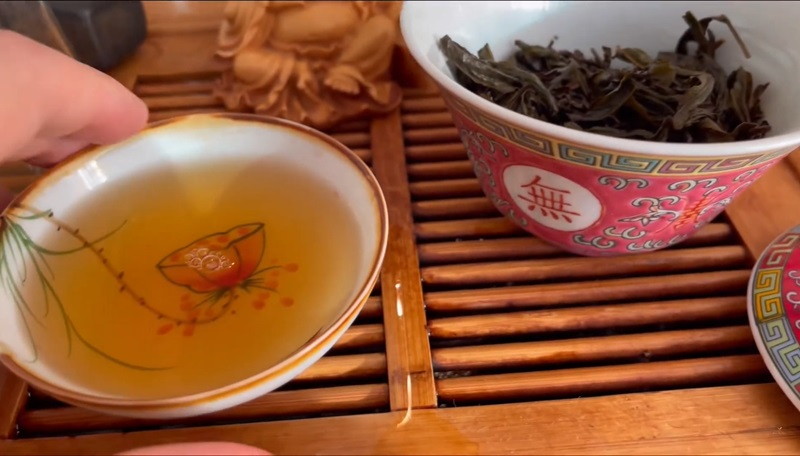
Qilan tea, a distinguished variety of Wuyi oolong, captivates tea enthusiasts with its unique and mild character. Grown in the rocky terrains of the Wuyi Mountains, this oolong boasts an enticing sweet and nutty aroma that sets it apart. The name "Qilan" translates to "rare orchid," an apt description for the tea's floral undertones. Its leaves, meticulously cultivated and processed, yield a smooth and nuanced infusion, making it a delightful choice for those seeking a refined oolong experience. With a heritage rooted in the rich tea culture of Wuyi, Qilan tea continues to charm connoisseurs with its distinctive flavor profile and aromatic allure.
Tieluohan Tea
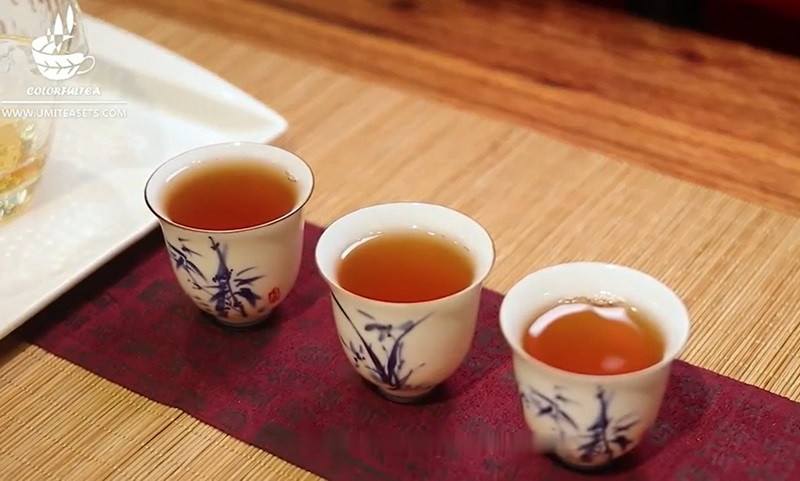
Tieluohan, a luminary among the Four Great Oolongs, represents a distinctive Wuyi tea celebrated for its captivating flavor and heritage. Grown on the precipitous cliffs of the Wuyi Mountains in Fujian, China, the tea derives its name, "Iron Arhat" or "Iron Warrior Monk," from a legendary warrior monk with golden-bronze skin credited with its creation.
This tea stands out with its vibrant, intense green leaves, yielding a brew of lighter color. Tieluohan's flavor profile is characterized by a full-bodied and supple taste, accompanied by subtle floral notes, creating a harmonious and enduring finish. As a vital part of the renowned rock teas, Tieluohan embodies the essence of Wuyi tea craftsmanship, enthralling tea enthusiasts with its rich heritage and exquisite sensory experience.
Shui Jin Gui Tea
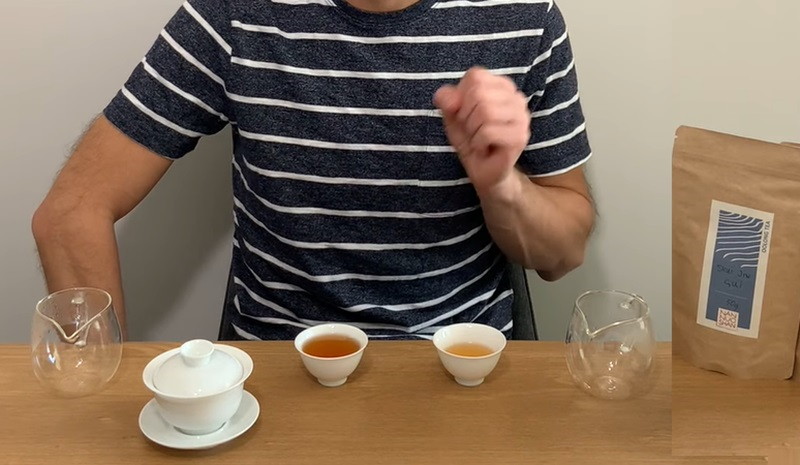
Shui Jin Gui, an esteemed Wuyi oolong tea hailing from Mount Wuyi in Fujian, China, boasts a name that translates to 'golden water turtle.' This tea, recognized as one of the Si Da Ming Cong or "Four Great Bushes," holds a distinguished position among Wuyi's renowned offerings.
Upon infusion, Shui Jin Gui reveals a strikingly bright green hue, setting it apart from other Wuyi oolong teas. Its appearance, characterized by a vibrant green color, adds a visual allure to its sensory appeal. As part of the illustrious Si Da Ming Cong, Shui Jin Gui contributes to the rich tapestry of Wuyi tea culture, known for its nuanced flavors and traditional craftsmanship. This tea stands as a testament to the heritage and excellence associated with Wuyi oolongs, captivating tea enthusiasts with its distinct character and the golden essence encapsulated in its name.
Yingdehong Tea
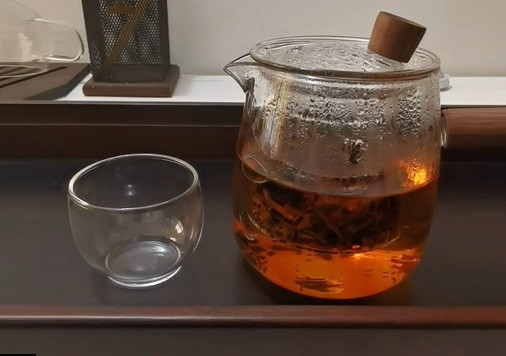
Yingde Hongcha, a black tea originating from Yingde in Guangdong province, China, holds a unique position in the world of Chinese black teas. Its production began in 1959, marked by mechanical processes that have evolved over the years. While a significant portion of this tea is destined for export, the region also produces select varieties, exhibiting a visual resemblance to leaf Oolong teas.
Distinguished by its cocoa-like aroma, Yingde Hongcha offers a sensory experience that resonates with the characteristics typical of Chinese black teas. The infusion is designed to leave a sweet aftertaste, a hallmark of quality black teas from China. With its roots in the rich tea heritage of Yingde, this black tea captures the essence of the region, inviting tea enthusiasts to savor the nuanced flavors and aromas crafted through decades of expertise and tradition.
Goji Tea
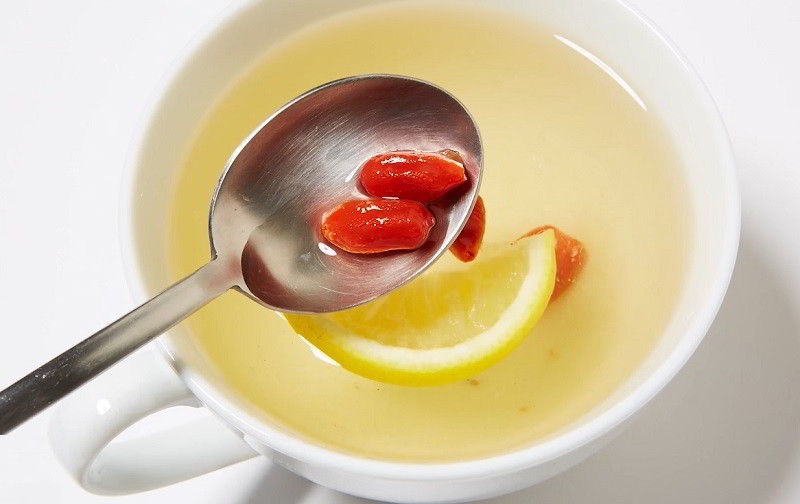
Gugi-cha, also known as goji tea, embodies a traditional Chinese and Korean tea-making practice, utilizing dried goji berries or leaves. Initially crafted with young goji leaves, contemporary variations often incorporate mature leaves or, more prevalently, goji berries. When prepared with berries, it is commonly referred to as goji berry tea or gugija-cha, while the version crafted with leaves is known as goji leaf tea or gugiyeop-cha.
This tea seamlessly intertwines tradition and modern preferences, allowing enthusiasts to experience the unique flavors and potential health benefits associated with goji berries. Whether brewed from leaves or berries, gugi-cha holds a special place in tea culture, offering a delightful infusion that reflects the natural essence of goji, celebrated for its vibrant red hue and nutritional richness.
Smart

The Smart soft drink, introduced by The Coca-Cola Company in 1997, caters to the diverse taste preferences of Chinese consumers, offering an array of flavors. Originally designed for the Chinese market, Smart has become a popular choice among consumers seeking a variety of refreshing options. While primarily available in China, it has also made appearances in certain locations in the United States.
Known for its diverse flavor profile, Smart soft drinks are crafted to suit different taste preferences, providing a refreshing experience for consumers. Notably, several Smart flavors were previously featured at Club Cool in Epcot, part of the Walt Disney World Resort in Florida, offering visitors a chance to sample and enjoy these unique beverage options.
Mengding Ganlu Tea
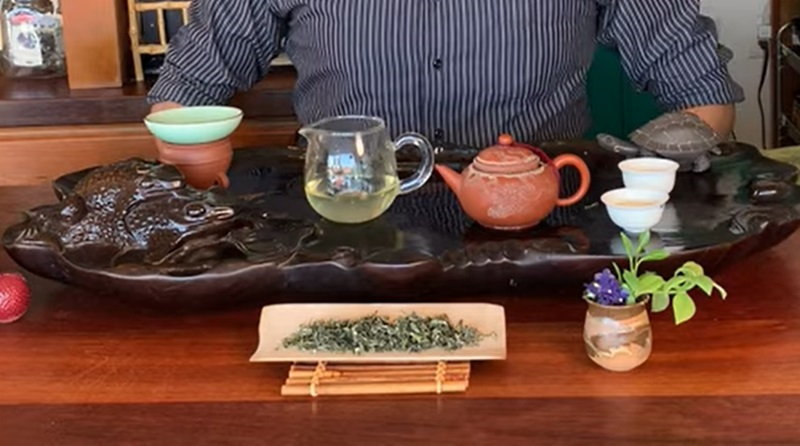
Hailing from Meng Mountain in Sichuan Province, China, Mengding Ganlu, also known as Ganlu tea, holds historical significance as the reputed birthplace of tea cultivation. The name "Mengding Ganlu" translates to "Sweet Dew of Mengding," with Mengding denoting the mountain's summit.
This tea, with its yellowish-green hue, is celebrated for its distinctive flavor profile. Mengding Ganlu captivates the palate with a sweet aftertaste, delivering a delightful and nuanced tea-drinking experience. Its association with the origin of tea cultivation adds to its cultural significance, making it a cherished variety among tea enthusiasts. The legacy of Mengding Ganlu extends beyond its taste, embodying the rich history and cultural heritage associated with the birthplace of tea on Meng Mountain.
Ice Peak
-1709539151.jpg)
Ice Peak, a vibrant brand of orange-flavored soda, emerges as a refreshing delight crafted by Xi'an Futian Foods in the culturally rich city of Xi'an, nestled in Shaanxi Province, China. This effervescent beverage has become synonymous with the local culinary scene, often enjoyed alongside Shaanxi specialties like paomo or youpo noodles.
Renowned for its zesty orange flavor, Ice Peak embodies the essence of a regional palate, reflecting the distinctive tastes of Shaanxi. The soda takes center stage in the renowned "Sanqin set meal," where it harmonizes with other culinary treasures such as roujiamo sandwiches and liangpi, creating a gastronomic experience that resonates both locally and internationally.
Available in Shaanxi restaurants across China and beyond, Ice Peak has transcended its role as a mere beverage, evolving into a cultural symbol that enhances the enjoyment of the region's diverse and delectable cuisine. The fizz and flavor of Ice Peak contribute to the vibrant culinary tapestry that defines the gastronomic landscape of Shaanxi.
Bai Jiguan Tea
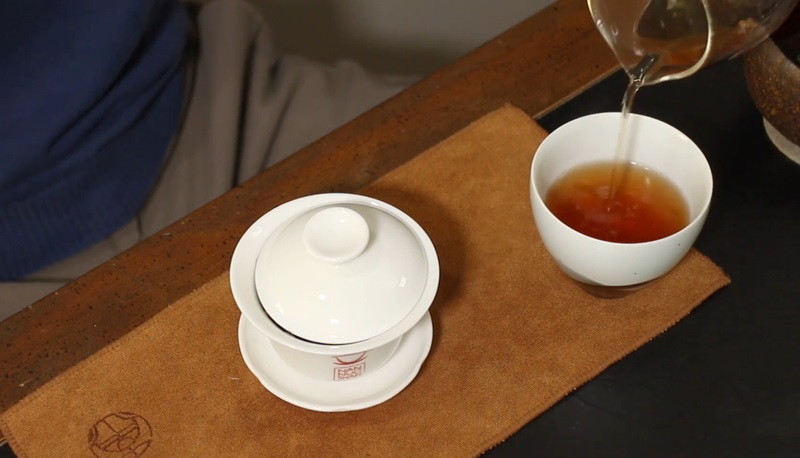
Bai Ji Guan, a distinguished member of the Si Da Ming Cong teas, stands out as a delicate oolong hailing from the Wuyi region in Fujian, China. Its name carries a poignant legend, attributing it to a courageous rooster that sacrificed itself while protecting its offspring from an eagle. In admiration of this selfless act, a monk memorialized the rooster by burying it, and from that sacred ground, the bai ji guan tea bush emerged.
Diverging from the typical appearance of Wuyi teas, Bai Ji Guan exhibits leaves with a distinctive yellowish to light green hue, deviating from the darker tones commonly found. This tea's flavor profile sets it apart from its Wuyi counterparts, offering a unique taste experience that deviates from the conventional Wuyi oolong character. Falling within the higher oxidized spectrum for oolongs but on the lower side for Wuyi teas, Bai Ji Guan presents a nuanced and exquisite cup, a testament to the rich heritage and stories woven into its leaves.
Baimao Hou
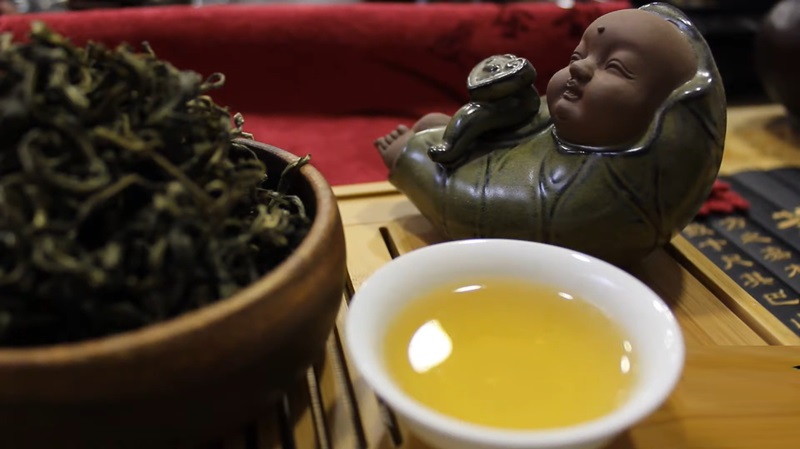
Baimao Hou, known as White Monkey, stands as a distinctive green tea crafted from the tender leaves and buds harvested in the initial weeks of the season, typically from late March to early April. Originating from the Taimu Mountains in Fujian Province, China, this tea undergoes meticulous processing involving steaming and drying to preserve its delicate essence.
The name "White Monkey" finds its inspiration in the appearance of the dried leaves, often likened to the paw of a white-haired monkey. Despite its green tea classification, Baimao Hou's name, flavor, and appearance occasionally lead to misconceptions, with some mistaking it for a white tea. This tea's unique characteristics, derived from the specific timing of harvest and careful processing, contribute to its individuality within the diverse landscape of Chinese green teas, creating a delightful and aromatic cup with a touch of the Taimu Mountains' terroir.
Fo Shou Tea
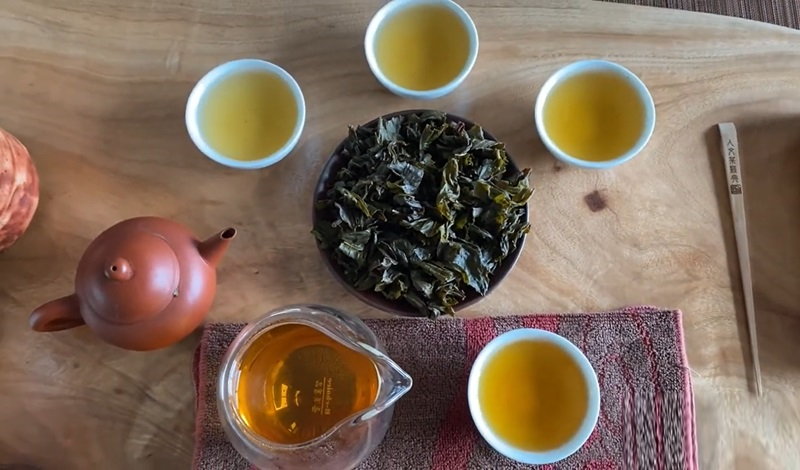
Fo Shou tea, also known as Buddha's Hand or Four Seasons Oolong, is a distinctive and flavorful Oolong tea with origins in both Yongchun and the renowned Wuyi Mountains of Fujian Province, China. It has also gained popularity and recognition in Taiwan, where its cultivation has further diversified its characteristics.
The name "Fo Shou" translates to "Buddha's Hand," alluding to the unique appearance of the tea leaves, which are said to resemble the graceful fingers of Buddha's hand. This tea is often classified as part of the Wuyi Oolong family, renowned for its complex and nuanced flavors.
Fo Shou tea undergoes a meticulous process of cultivation, harvesting, and oxidation. The leaves are typically harvested during the first two weeks of the season, emphasizing the importance of timing to capture the tea's desired characteristics. The flavor profile of Fo Shou tea is noted for its lightness and distinctive taste, offering a refreshing and somewhat peculiar sensory experience that sets it apart from other Oolong teas.
Whether enjoyed in traditional tea regions like Yongchun or the renowned Wuyi Mountains or savored in the tea gardens of Taiwan, Fo Shou tea stands as a testament to the rich diversity and cultural significance embedded in Chinese tea traditions. Its unique qualities continue to captivate tea enthusiasts seeking a memorable and authentic Oolong tea experience.
Ban Tian Yao Tea
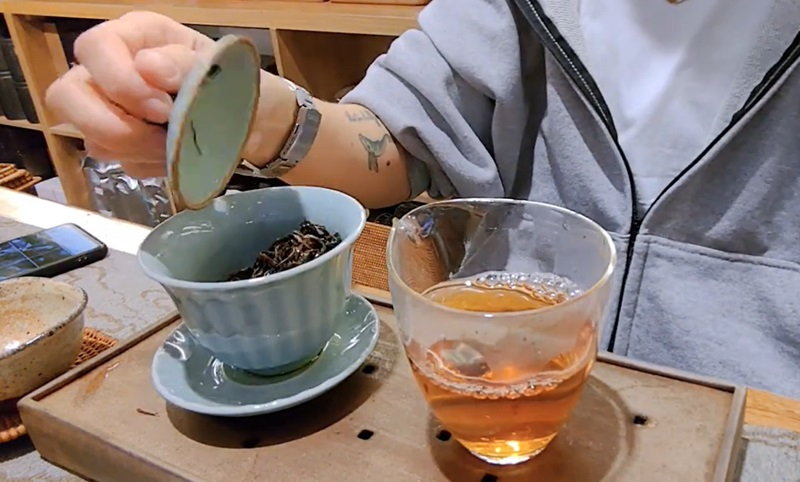
Ban Tian Yao is an extraordinary Wuyi Oolong tea renowned for its unique and delightful characteristics. Hailing from the renowned Wuyi Mountains, this tea is celebrated for its rarity and exceptional flavor profile.
The name Ban Tian Yao translates to "Halfway up the Cliff," reflecting the challenging terrain where the tea bushes are cultivated. This unique environment, coupled with traditional processing methods, imparts distinctive qualities to the tea leaves.
One of the defining features of Ban Tian Yao is its light smokiness, a result of the tea leaves being carefully roasted over charcoal. This meticulous roasting process contributes to the tea's complex flavor, offering a harmonious balance of floral, fruity, and subtly smoky notes.
The leaves of Ban Tian Yao are typically dark and tightly rolled, showcasing the craftsmanship involved in its production. The infusion yields a rich, amber-colored liquor with a captivating aroma.
Considered a rare gem among Wuyi Oolongs, Ban Tian Yao is cherished by tea connoisseurs for its unique taste profile and the skillful artistry involved in its creation.
Dafang Tea
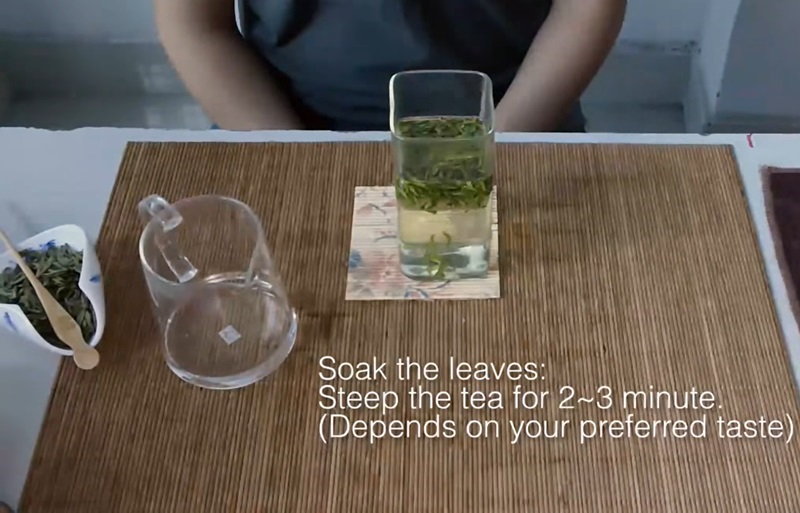
Da Fang, also known as Zhuye Da Fang or Zhupu Da Fang, stands as a distinguished Chinese green tea, earning recognition as one of China's top ten teas among esteemed tea experts. This tea shares similarities with Longjing tea, characterized by sharp, flat shapes and a production process akin to its renowned counterpart. Some experts even propose Da Fang as an ancestral variety of Longjing tea, showcasing its historical significance in Chinese tea culture.
Da Fang tea boasts sleek, flat leaves with a distinctive yellowish-green hue, while its hidden buds are adorned with golden down. The brewing process reveals a liquor exuding a durable fragrance, leaving behind a sweet aftertaste that enhances the overall tea-drinking experience.
The tea's uniqueness extends to its diverse drying processes, resulting in two distinct types: Zhong Huo and Qing Huo. Zhong Huo imparts a brisk and delicate taste, adding to the tea's versatility and appeal among tea enthusiasts seeking a nuanced and flavorful green tea experience.
Si Da Ming Cong Tea
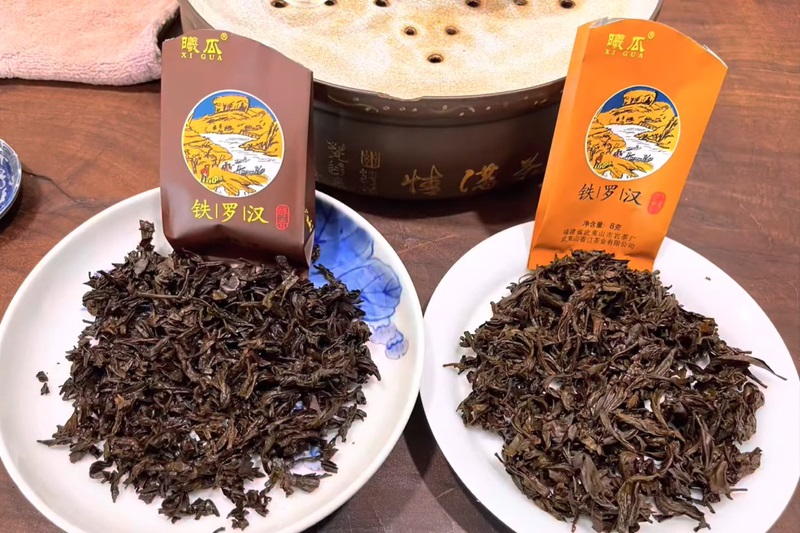
Si Da Ming Cong, which translates to the "Four Great Bushes," represents a prestigious collection of Wuyi oolong teas, each renowned for its distinctive qualities and cultural significance. Among them, Da Hong Pao, or 'Big Red Robe,' holds a special place, celebrated not only for its rich flavor but also steeped in the historical tapestry of an imperial tribute. Shui Jin Gui, or 'Golden Water Turtle,' distinguishes itself with a vibrant green hue upon brewing, standing proudly among the esteemed Wuyi oolongs. Tie Luo Han, named after a warrior monk, enchants tea enthusiasts with a full-bodied, supple flavor and delicate floral notes, embodying the spirit of its legendary namesake. Finally, Bai Ji Guan, with its yellowish-green leaves, adds a unique touch to the Si Da Ming Cong ensemble, offering a diverse and flavorful experience for those exploring the world of Wuyi oolong teas.
Bu Zhi Chun Tea
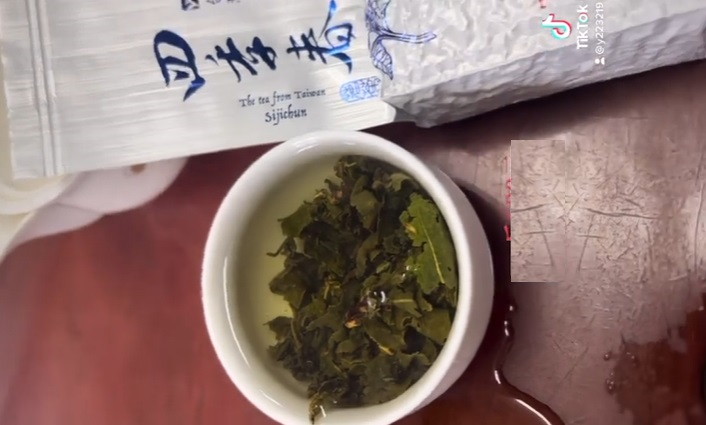
Bu Zhi Chun tea, a distinguished member of the Wuyi oolong family, captivates tea enthusiasts with its delicate and nuanced flavor profile. This unique varietal is celebrated for its light taste, setting it apart in the spectrum of Wuyi oolongs. Hailing from the Wuyi Mountains in Fujian, China, Bu Zhi Chun undergoes a meticulous production process that accentuates its subtle and refreshing notes. The name "Bu Zhi Chun" translates to "not aware of spring," perhaps alluding to its ability to transport drinkers to a timeless realm, unfettered by seasonal constraints. This tea, with its distinct characteristics, showcases the craftsmanship and artistry inherent in Wuyi oolongs, making it a delightful choice for those seeking a gentle and nuanced tea-drinking experience.
Huang Meigui Tea
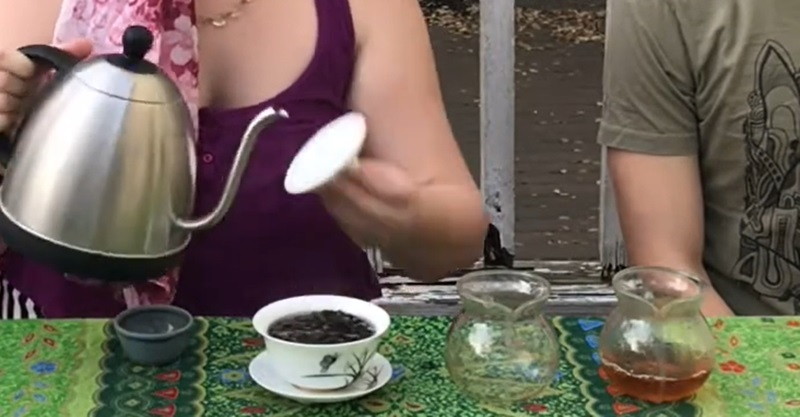
Introduced around 2002, Huang Meigui emerges as a contemporary gem within the realm of Wuyi oolong teas. This distinctive tea captivates connoisseurs with its pronounced aromatic fragrance, setting it apart from its counterparts in the Wuyi Mountain region. Unlike traditional Wuyi oolongs, Huang Meigui surprises with a lighter and more floral taste, offering a refreshing deviation from the norm. The steeped leaves reveal a remarkable light green hue, distinguishing it as a unique varietal within the rich tapestry of Wuyi oolongs. Embodying the spirit of innovation in tea cultivation, Huang Meigui invites tea enthusiasts on a sensory journey marked by its modern appeal and delicate flavor profile, making it a notable addition to the diverse world of Chinese oolong teas.
Ruan Zhi
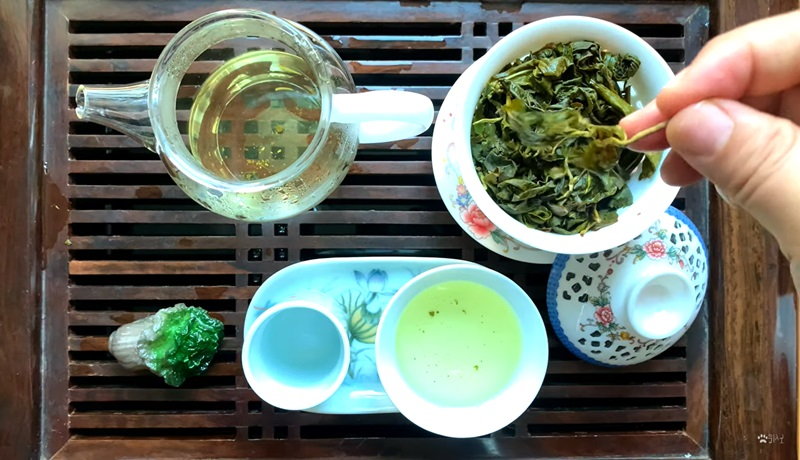
Ruan Zhi, also known as Qingxin, stands out as a notable cultivar of the tea plant, predominantly crafted into oolong teas. Originating from the picturesque Anxi County in Fujian province, China, this tea variety has established its presence in renowned highland oolong teas. Famed for its delicate taste, Ruan Zhi captivates tea enthusiasts with a light yet distinctive flavor profile. Often likened to the fragrance of orchids, the tea's aroma adds a touch of floral elegance to the overall experience. Notable oolongs crafted from the Ruan Zhi cultivar include the celebrated Oriental Beauty (Dongfang Meiren), Tung-Ting (Dongding), and Baozhong (Pouchong). As a cultivar cherished for its unique attributes, Ruan Zhi continues to contribute to the rich tapestry of oolong teas, offering a nuanced and delightful tea-drinking experience.
Huangguanyin
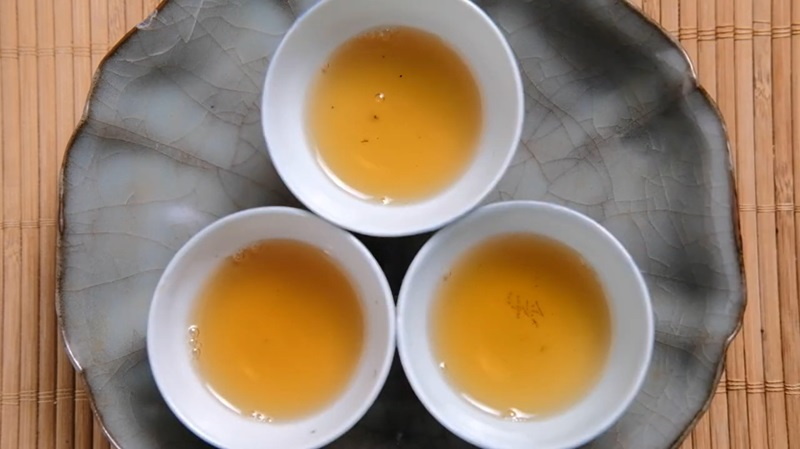
Huang Guanyin tea, a distinguished Wuyi oolong, unfolds a delightful sensory journey with its creamy taste, offering a unique twist in the realm of oolong varieties. The tea leaves can be expertly crafted, either tightly rolled akin to Anxi Oolongs or presented in strips, showcasing the versatility within the Wuyi oolong tradition. This tea exemplifies the intricate artistry of Chinese tea cultivation and processing, capturing a rich spectrum of flavors within its leaves.
Beyond its role as a beverage, Guanyin leaves find diverse applications in Chinese culinary traditions. Fresh and green leaves are harvested to embark on a culinary adventure, involving soaking, beating, milling, and sieving to create a puree. This puree becomes the foundation for crafting Guanyin LiangFen grass jelly, presenting a delightful fusion of flavors and textures. The dual role of Huang Guanyin tea, as both a consumable treasure and a culinary artisan's tool, underscores its significance in Chinese tea culture, adding layers of enjoyment and versatility to tea enthusiasts and culinary connoisseurs alike.
Jin Fo Tea

Jin Fo tea, an esteemed member of the Wuyi Oolong family, has its roots deeply embedded in the Wuyi Shan Tea Researching Center in Fujian Province, China. This medium-bodied Wuyi Oolong reveals a harmonious symphony of creaminess and a lingering floral aftertaste, exemplifying the meticulous craftsmanship and innovative spirit of tea production at Wuyi Shan.
Distinguished by its uniform emerald green leaves, Jin Fo tea stands as a testament to the continuous refinement and development of Oolong varieties. The tea's medium body allows for a well-balanced fusion of flavors, providing tea enthusiasts with a delightful and nuanced experience. The infusion of creaminess and floral notes further enhances the sensory journey, making Jin Fo tea a noteworthy addition to the rich tapestry of Wuyi Oolongs. As a product of dedicated research and careful cultivation, Jin Fo tea invites tea connoisseurs to savor the essence of Wuyi tea heritage with each sip, embodying both tradition and innovation in the world of Chinese tea.
Jin Suo Chi Tea

Jin Suo Chi, a highly elusive member of the Wuyi Oolong family, captivates tea enthusiasts with its rarity and delicate flavor profile. Hailing from the renowned Wuyi Mountains in Fujian, China, this tea is distinguished by its light taste, offering a subtle and nuanced drinking experience. The leaves of Jin Suo Chi unfold a story of meticulous cultivation and craftsmanship, embodying the essence of traditional Chinese tea culture. As a rare gem within the world of Wuyi Oolongs, Jin Suo Chi stands as a testament to the diversity and complexity that this tea-producing region has to offer, inviting tea aficionados to explore the delicate nuances that characterize this exceptional Oolong variety.
Shanjuan Chunyue

Shanjuan Chunyue, a Chinese green tea cultivated in the picturesque Shanjian Village of Jiangsu province, showcases a distinctive appearance with leaves gracefully shaped like a crescent moon, displaying a captivating hue of dull green. This tea embodies the craftsmanship and terroir of its origin, capturing the essence of the local tea culture. As the leaves unfold, they unveil a story of dedication and tradition, offering tea enthusiasts a sensory journey through the lush landscapes of Shanjian. The unique crescent-shaped leaves contribute to the visual allure of Shanjuan Chunyue, inviting tea connoisseurs to savor not only its delicate flavor but also the cultural richness embedded in each steeped cup.




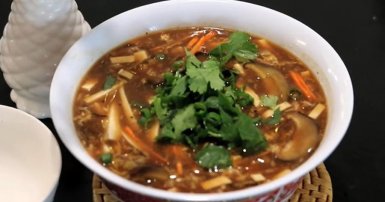
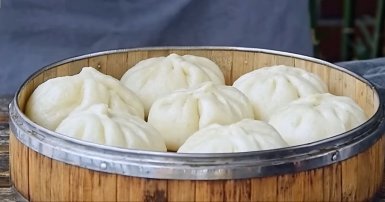
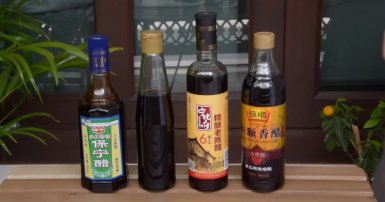
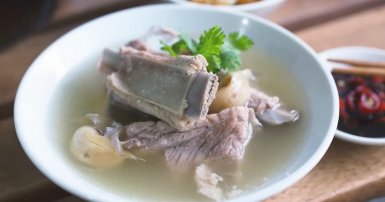
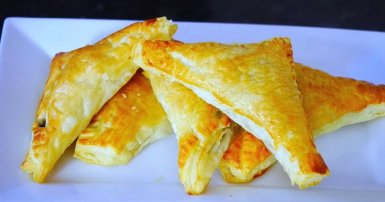
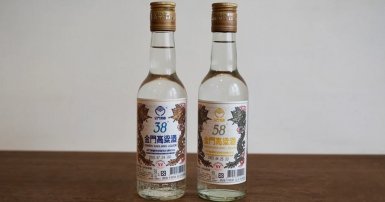
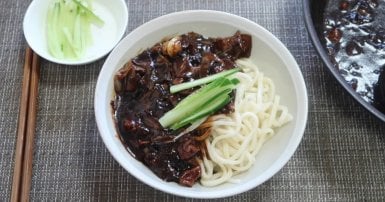
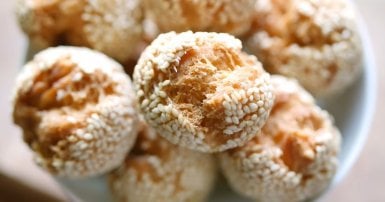

-1709813013.jpg)


